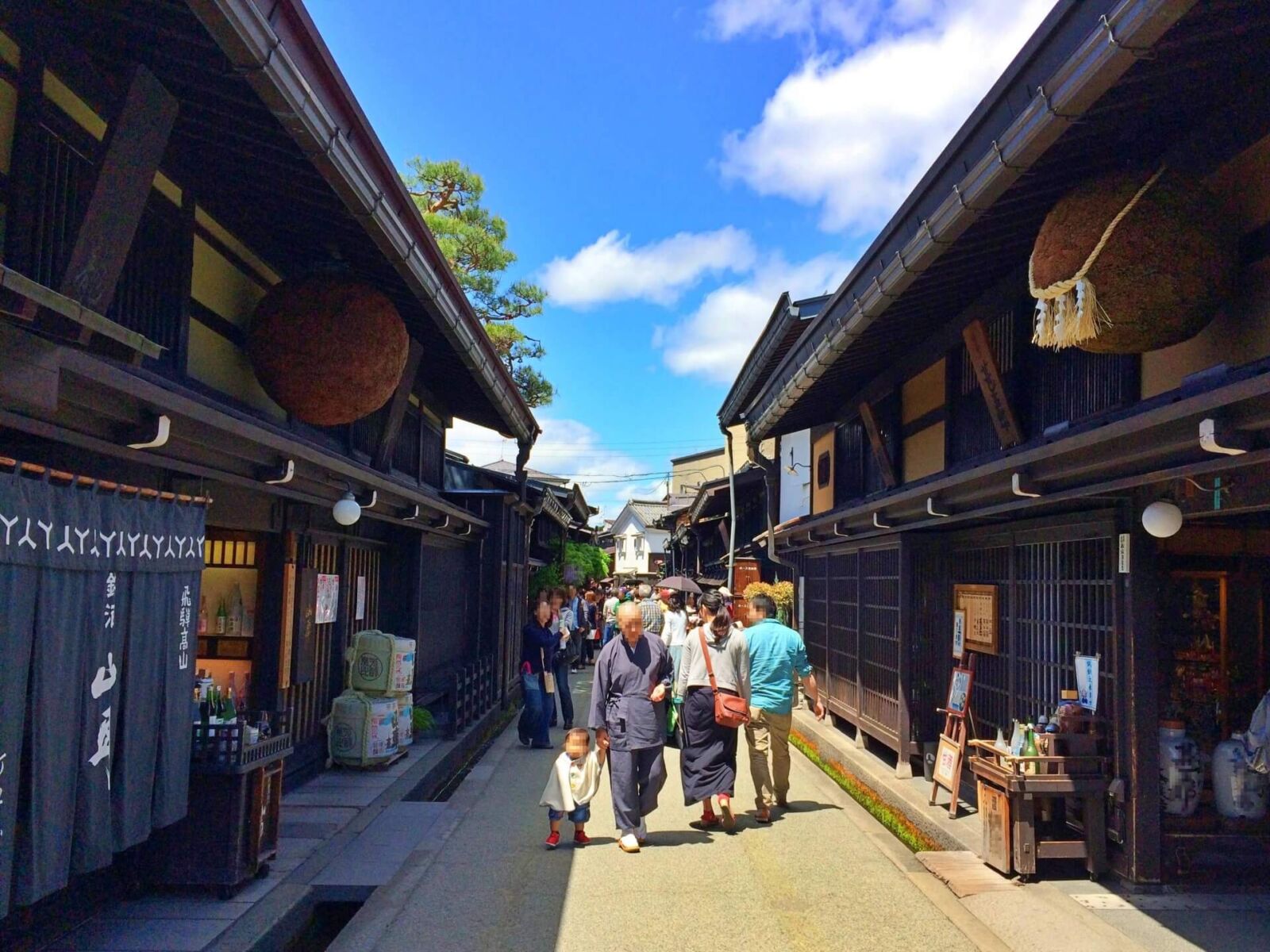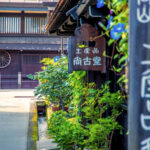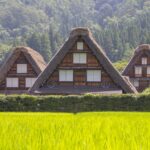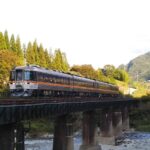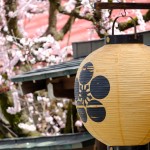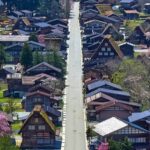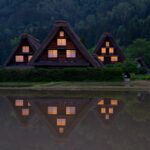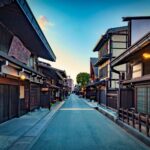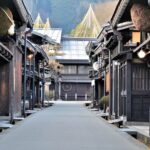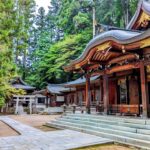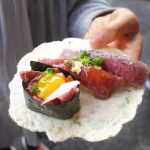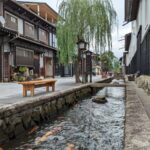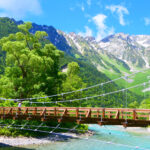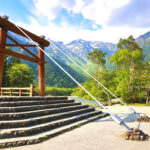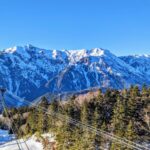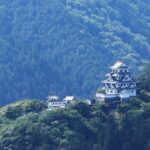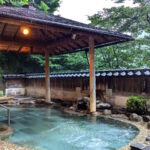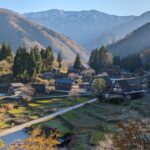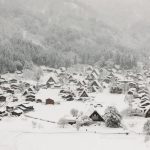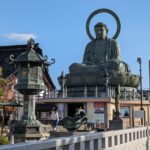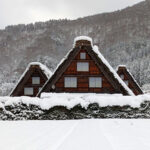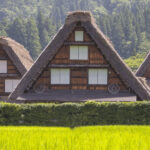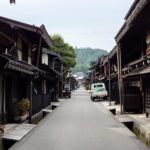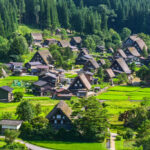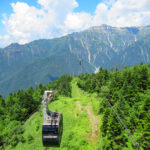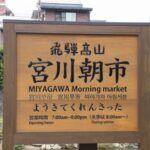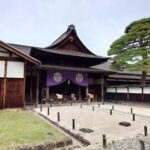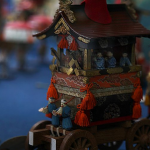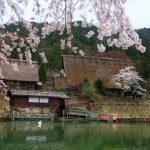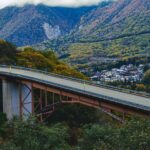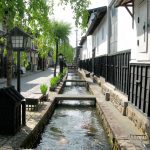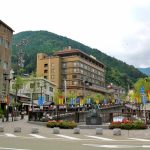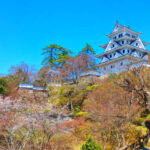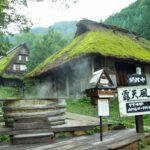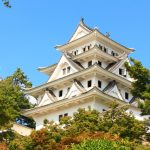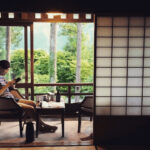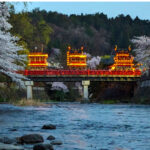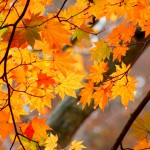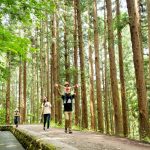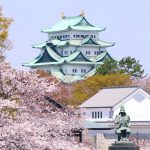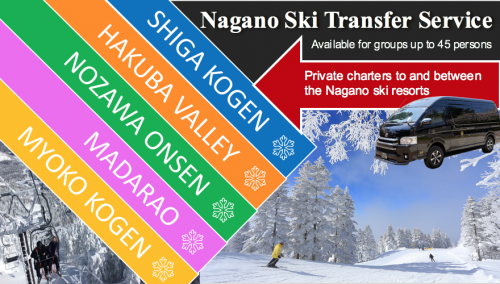25 Things to Do Around Takayama & Where to Stay
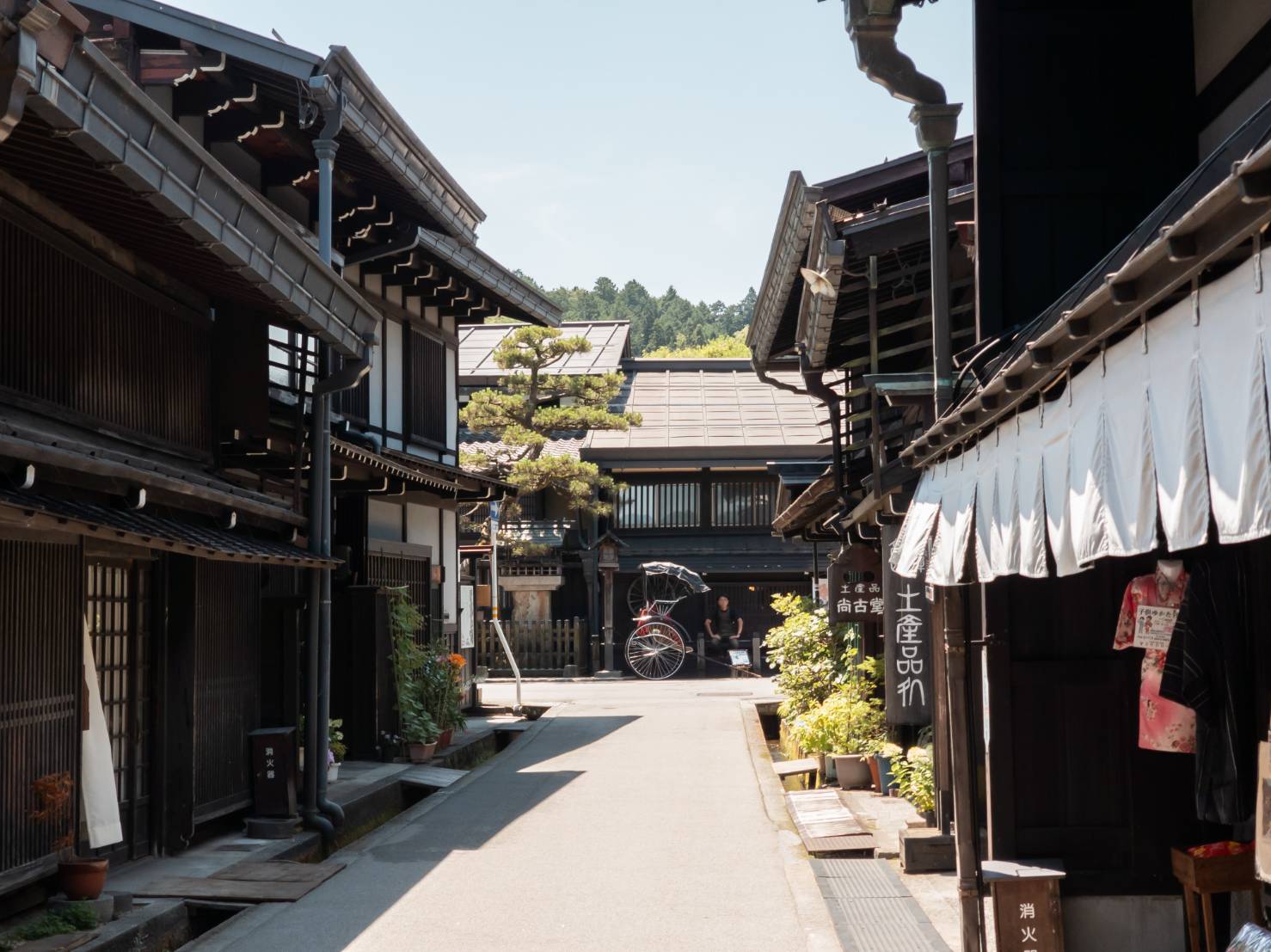
Located deep within the mountains of Central Japan, Takayama is famous for the excellent preservation its Edo Period (1603-1868) historical centre, known as the ‘Sannomachi’. Once under the direct control of the shogunate, Takayama was an important and prosperous merchant town known for the skill of its carpenters and other artisans. Today, the old town is beautifully preserved with much of the Edo streetscape and building facades intact attracting visitors from all over the world. On this page you will find the following information:
— Best Things to Do Around Takayama
— Best Tours and Itineraries in Takayama & Shirakawa-go
— Where to Stay When Visiting Takayama?
— Book With Us! Nagano’s No.1 Tour & Charter Operator
When people talk about the beauty of Takayama and encourage you to visit, they are speaking of the city’s beautiful historic centre – one of Japan’s best remaining examples of an Edo Period (1603-1868) town. Through that time, Takayama was renowned for the skill of its carpenters, timber craftsmanship and other artisans. As such the city was placed under the direct control of the shogun, under a policy known as ‘shihaisho’ or ‘tenryo’. Translating to ‘emperor’s land’, Takayama was effectively owned by the shogun who made use of its master craftsmen in constructing temples and official buildings throughout Japan. Today, that mastery can still be seen in the charming streetscape of Takayama’s old town. Known as the Sannomachi, the historic centre of the city is lined with beautiful buildings housing restaurants, craft and food stores, breweries, museums, accommodation and many residential homes.
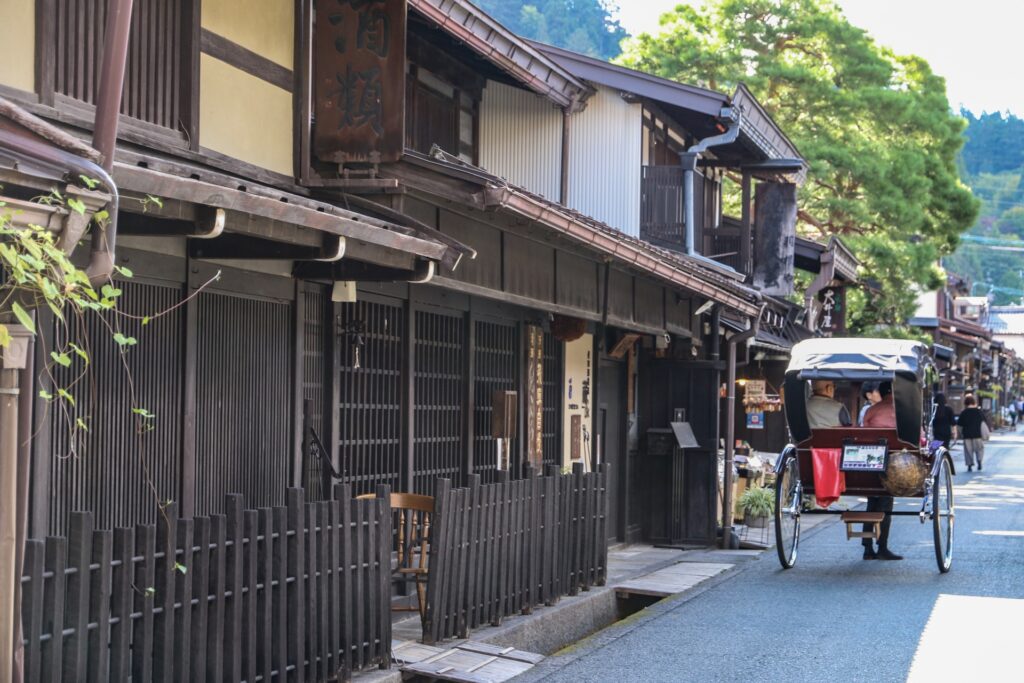
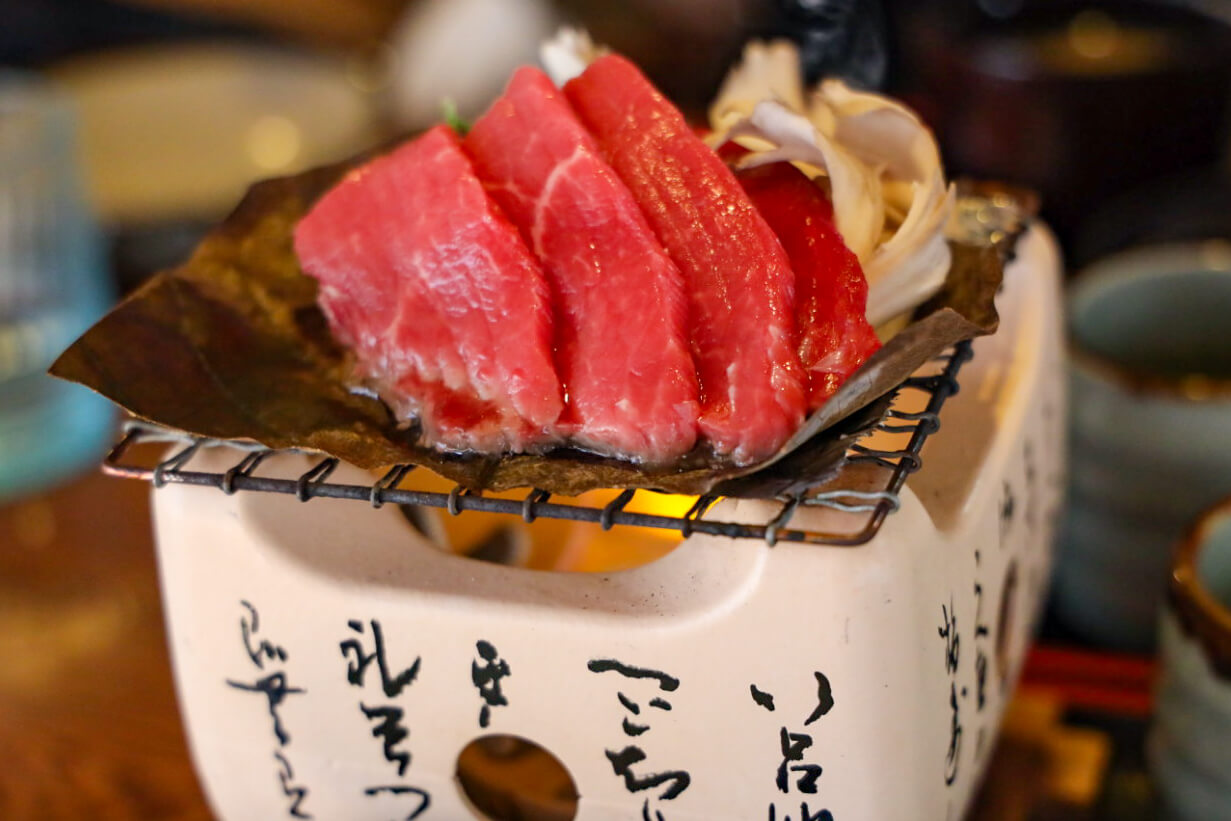
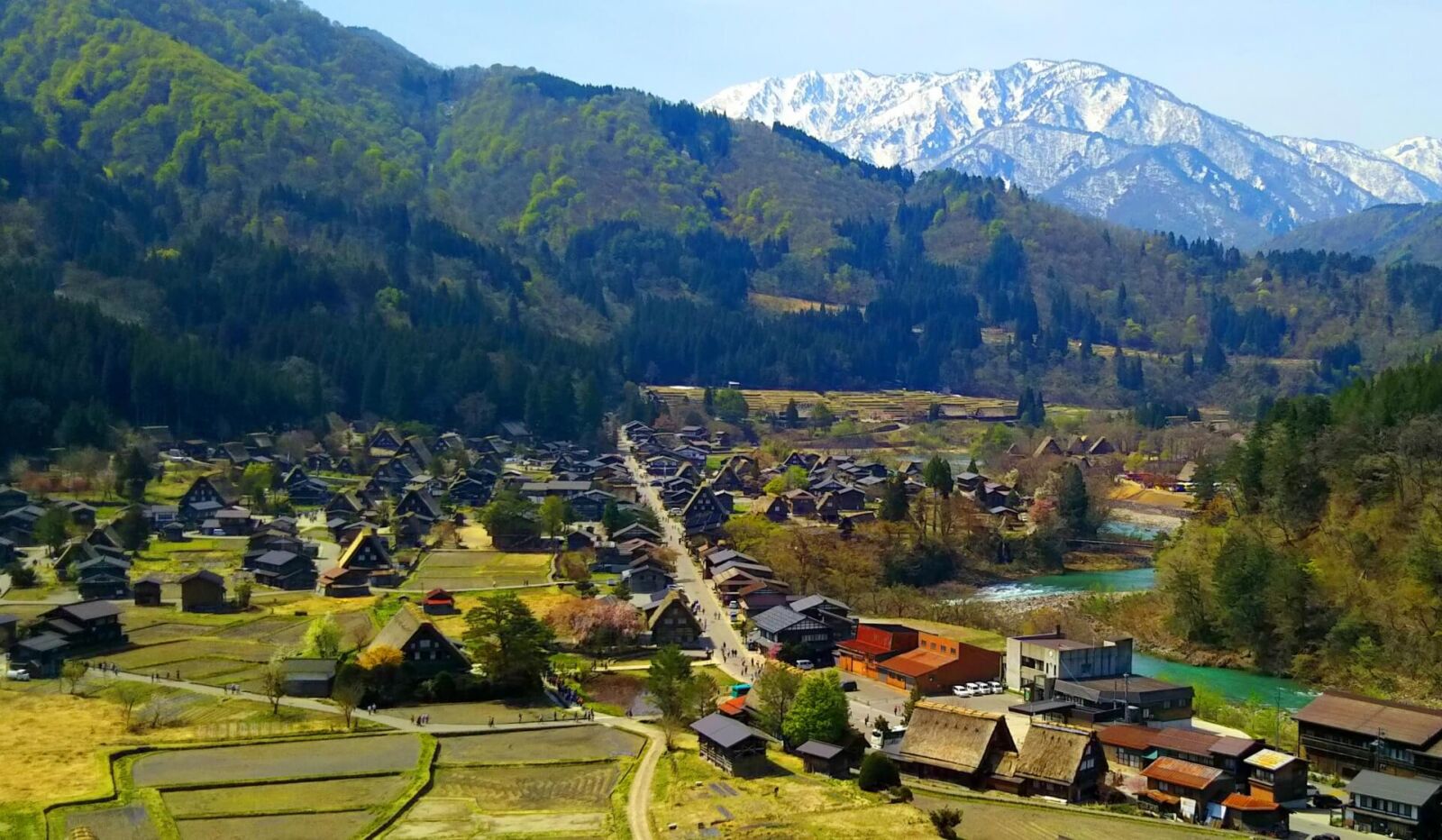
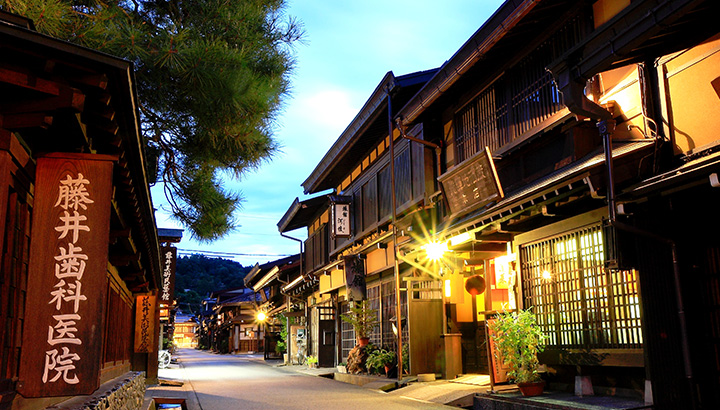
The city is equally well-known for its thriving food scene including its famous Hida beef and Takayama ramen, while outside of the city, visitors can access some of Japan’s most rewarding destinations including the World Heritage-listed villages of Shirakawa-go and Gokayama, the beautiful alpine valley of Kamikochi or more historic destinations such as Matsumoto Castle and post towns of the Nakasendo. This page contains tips and suggestions of places to visit and things to do immediately in and around Takayama, along with the many great attractions and activities on offer as you move deeper into the heart of Japan. Let’s begin with the obvious question…
WHERE IS TAKAYAMA?
Takayama is a small but popular destination for both Japanese and international travellers. Located in Gifu Prefecture, Takayama Station lies around 300km / 5 hours to the north-west of Tokyo and 90 to 110km / 2 hours to the south of Toyama and Kanazawa. Sometimes referred to as ‘Hida-Takayama’, the town is most easily reached by train using the Limited Express ‘Hida’ service running from Toyama to Nagoya, or bus services from Kanazawa and Matsumoto. A relatively common town name across Japan, when planning your trip to Takayama be sure to check you that you are booking your transport and accommodation to the correct town – as shown above.
BEST THINGS TO DO AROUND TAKAYAMA
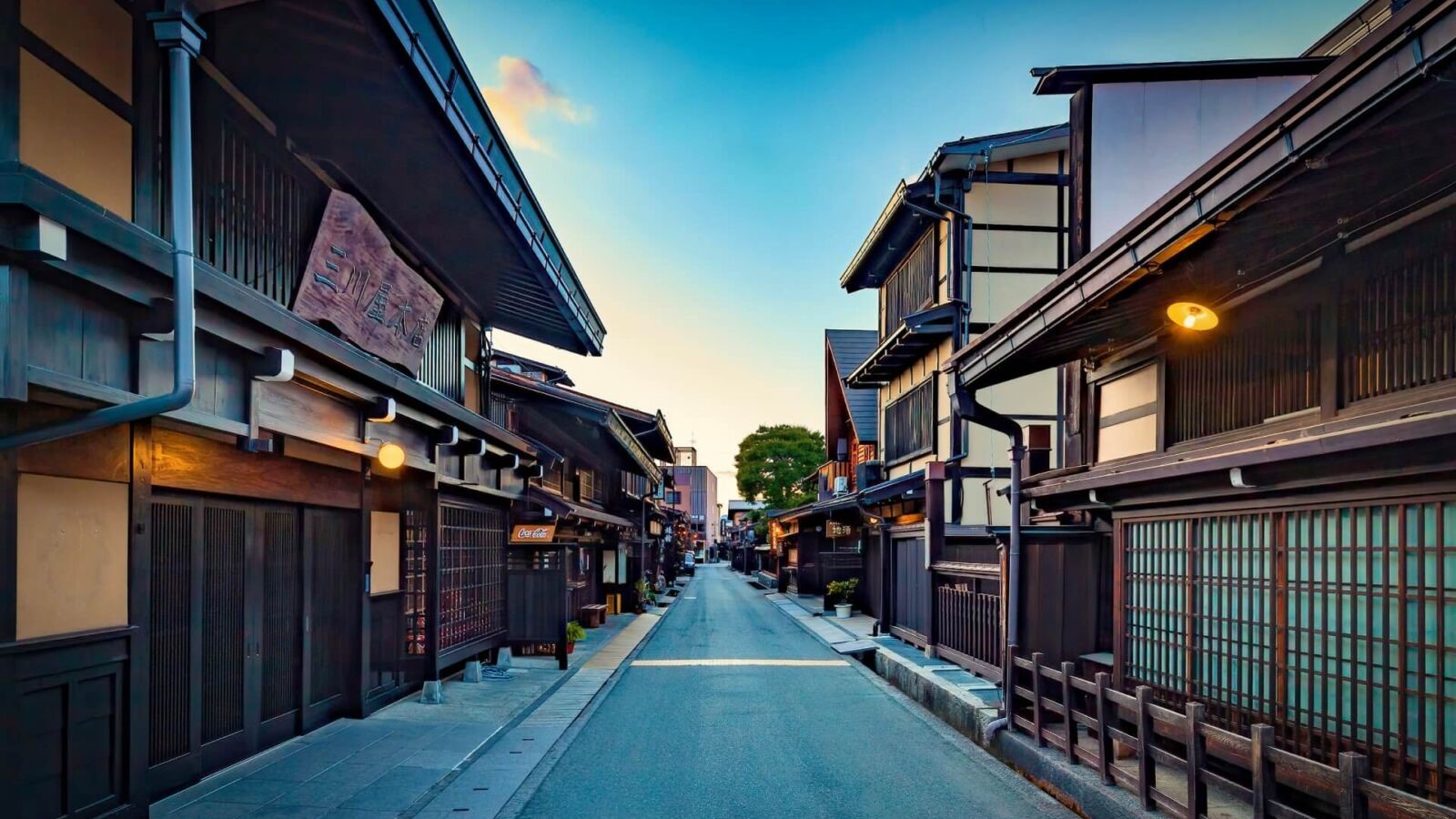
Over recent years, Takayama has become firmly established as a popular destination for international travellers wanting to enjoy a traditional Edo Period town. The beautifully preserved buildings of the old town house restaurants, craft stores, museums, galleries, breweries, guesthouses and homes creating a thriving atmosphere and a fantastic food scene. Most famously, the region is known for its sought-after ‘Hida Beef’ – considered some of the best in Japan – along with distinctive Takayama ramen; while outside the city, the World Heritage-listed villages of Shirakawa-go and Gokayama and the beautiful alpine valley of Kamikochi are all within easy reach. We hope the following suggestions inspire you visit Takayama, starting with:
1 / EXPLORE THE TAKAYAMA OLD TOWN / all year round
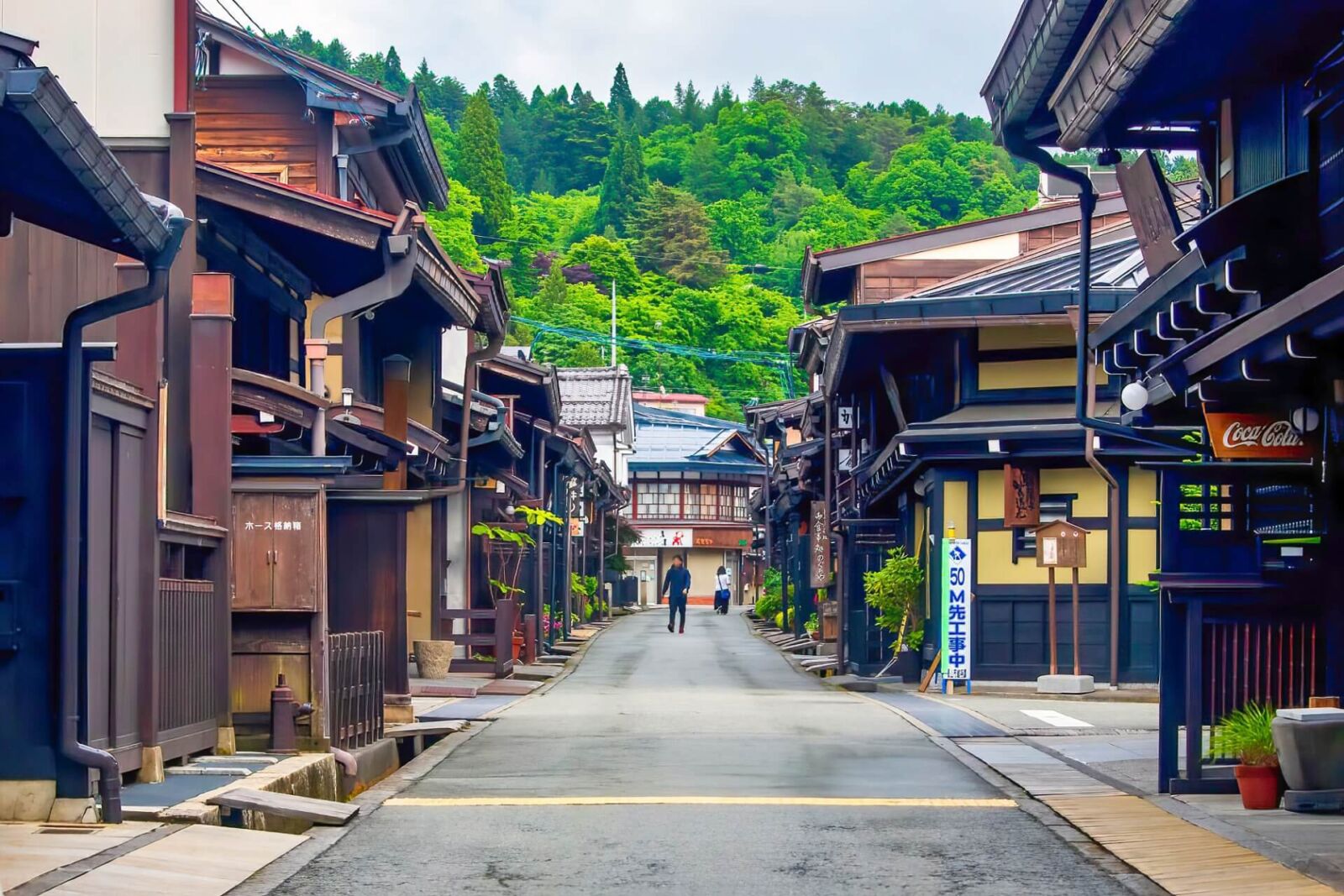
Immerse yourself in the timeless charm of Takayama’s Old Town, an area frozen in time since its days as a bustling castle town in the Edo Period (1603-1868). Step back onto labyrinthine streets where ancient wooden houses now whisper tales of merchants and samurai. Browse unique shops overflowing with exquisite local crafts, and savor melt-in-your-mouth delicacies in charming restaurants housed within these historic walls. Wander the well-preserved district of Sannomachi, where history comes alive at every turn, and breathe in the timeless atmosphere of a bygone era.
Learn more about our “1-Day Tour in Takayama: Immerse in Takayama’s Rich History and Temples” tour to experience the best of this historic gem.
1 Day Tour
| 1-Day Tour in Takayama: Immerse in Takayama’s Rich History and Temples | |
|
| |
| Period | All Year Round |
| Time | 09:00 – 16:00 |
| Meeting Place | Takayama Station |
| Adult Rate | ¥18,800 |
| Child Rate | ¥11,500 |

2 / TAKAYAMA JINYA / all year round
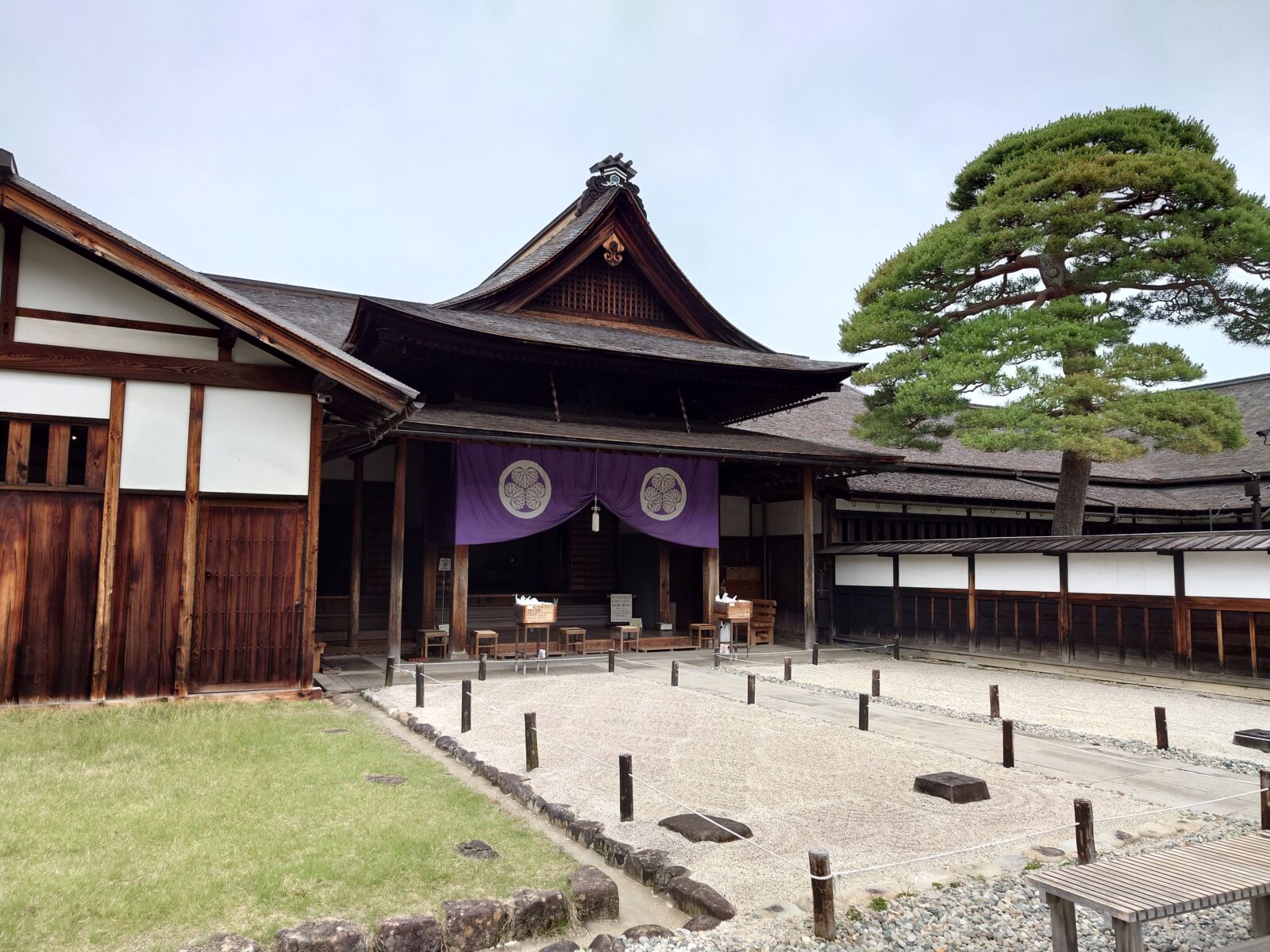
Step into the heart of power at Takayama Jinya, a time capsule of Edo-era authority that once served as the government headquarters once served as the government headquarters for the Hida region under the Tokugawa Shogunate. Imagine samurai whispers and the echo of decrees still lingering within its imposing wooden walls. Though its first use dates back to the 1600s, the current structure, meticulously reconstructed in 1816, stands as a testament to its enduring legacy. Today, it stands as the last of its kind, a museum open to the public, inviting you to delve into its fascinating history. Explore chambers where decisions shaped lives, peek into hidden corners where secrets might linger, and feel the weight of history seep into your bones.
For a deeper dive into the Jinya’s captivating narrative, join our “1-Day Tour from Takayama: Explore Scenic Old Japan in Takayama and Shirakawa-go” tour and unlock the hidden stories whispering within its walls.
1 Day Tour
| 1-Day Tour from Takayama: Explore Scenic Old Japan in Takayama and Shirakawa-go | |
|
| |
| Period | All Year Round |
| Time | 09:00 – 18:30 |
| Meeting Place | Takayama Station |
| Adult Rate | ¥20,800 / 22,800 |
| Child Rate | ¥12,000 / 14,000 |

3 / TAKAYAMA MORNING MARKETS / all year round
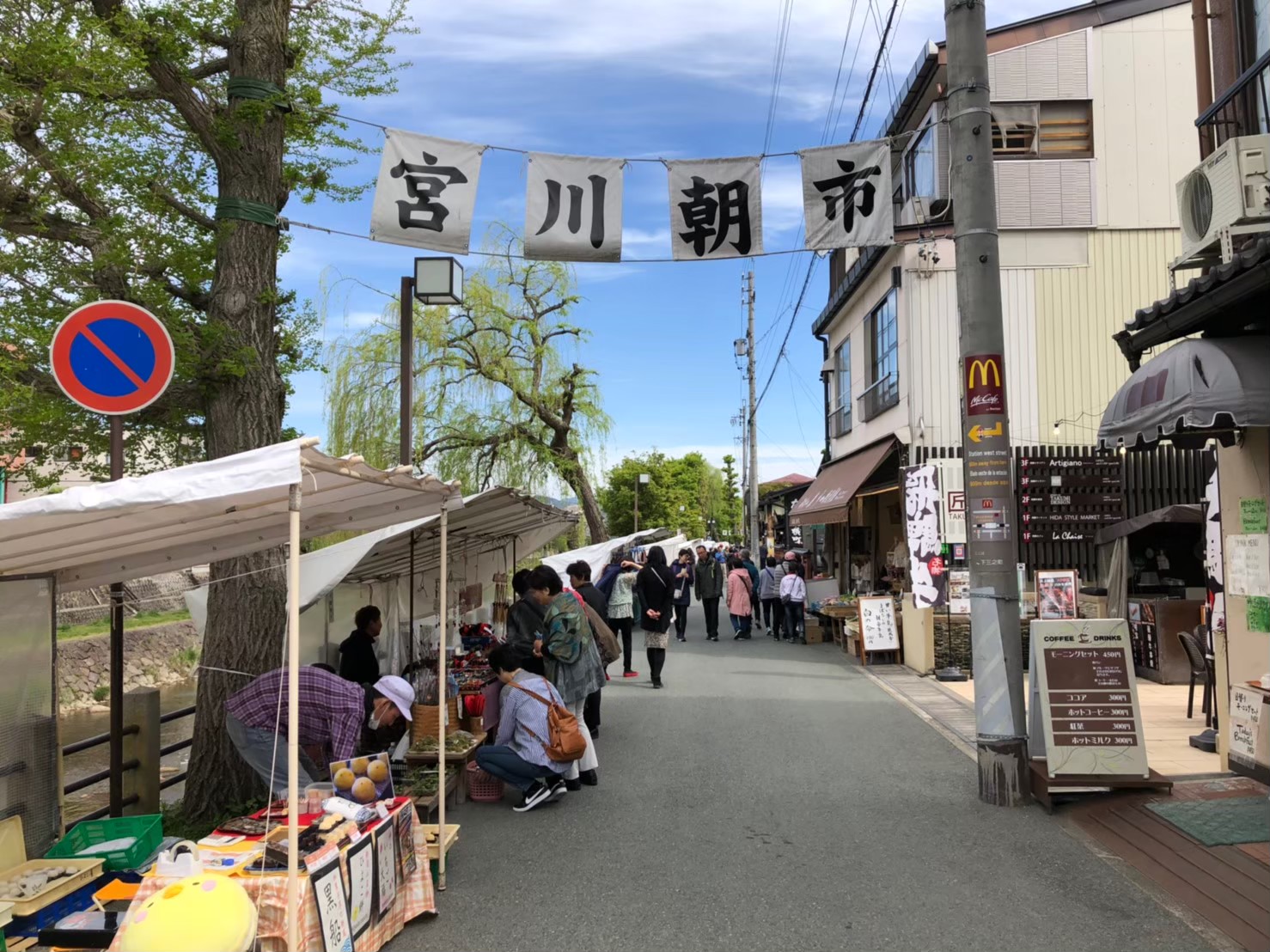
Takayama boasts two bustling morning markets, offering a vibrant snapshot of local life and culinary delights. The Miyagawa Morning Market, located along the scenic Miyagawa River, features over 60 shops and stalls overflowing with fresh produce, tempting pastries, and handcrafted souvenirs. Step back in time at the Takayama Jinya Morning Market, established over 300 years ago, where local farmers and artisans showcase their wares, from seasonal vegetables to unique local crafts. Both markets are conveniently located a 10-minute walk from Takayama Station from 7 a.m. to noon during the warmer months and 8 a.m. to noon in the colder months, all year round. Immerse yourself in the lively atmosphere, discover hidden treasures, and savor the taste of authentic Takayama – a perfect start to any day’s exploration.
4 / THE LOCAL FOOD / all year round

You can’t visit Takayama without trying the local specialties, and let’s face it, you need to eat, so why not? Hida beef is the variety of wagyu from the Takayama area known for being delectably tender and high-quality. Takayama offers Hida beef in many different forms and none of them disappoint. If you are looking for a sit-down meal many restaurants offer Hida beef hamburgers, or if you’re looking for something to eat on the run, many street stalls sell croquettes made from Hida beef.
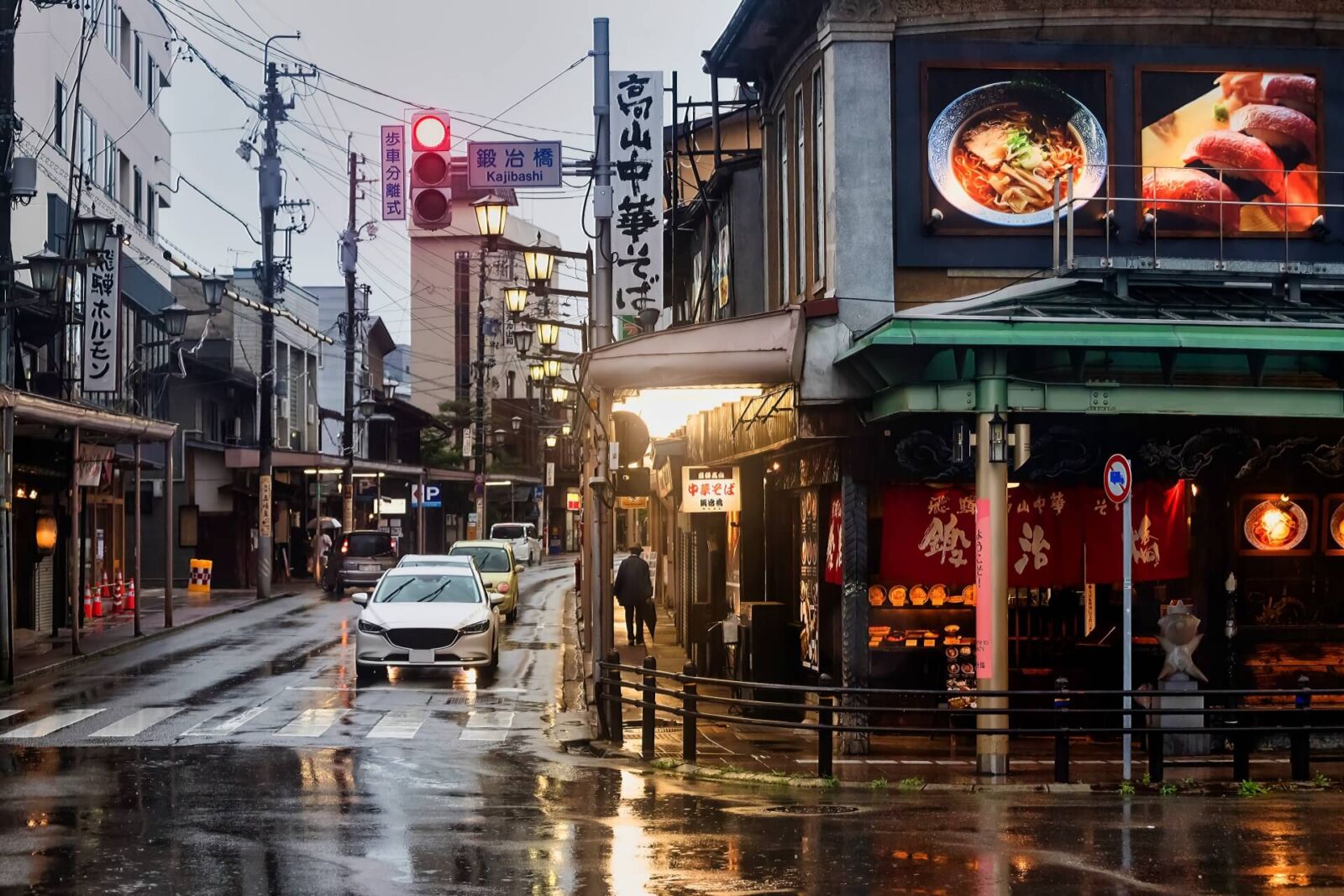
Takayama ramen is also quite famous. The ramen in Takayama is distinguished by its thinner, curly noodles and chicken-based broth. For dessert try sweet Gohei-mochi, which are flattened rice cakes grilled on skewers and flavoured with sweetened soy sauce. No matter what you’re after in terms of food, it is worth noting that the popularity of the town means increasing visitor numbers are quickly outstripping the number of restaurants available. Expect long queues and wait times at the most popular eateries with many now requiring reservations at all times of day. If you have you’re eye on a particular restaurant, make sure to book ahead of time to avoid missing-out!
5 / TAKAYAMA FESTIVALS / April & October
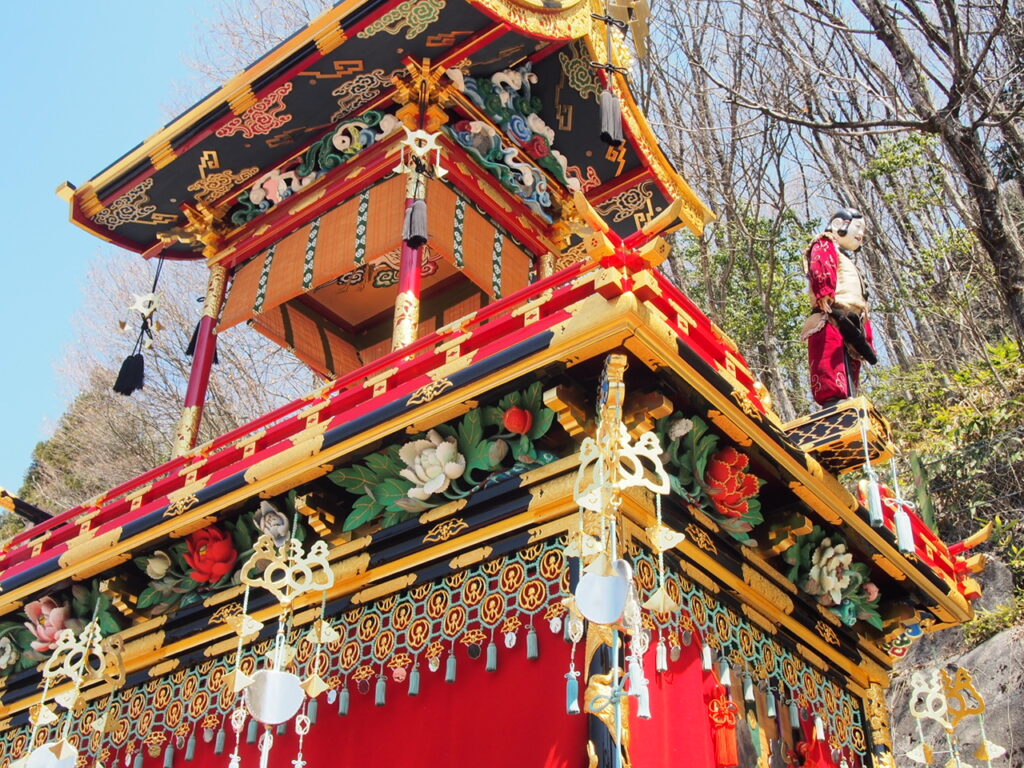
Feel the rhythm of centuries beat beneath your feet as you dive into the Takayama Festival, a kaleidoscope of color and tradition held twice a year. Spring bursts into life with the Sanno Festival (April 14-15), where elaborately-carved floats adorned with mythical creatures dance through the streets, accompanied by playful marionettes and vibrant costumes. Autumn paints the town in fiery hues for the Hachiman Festival (October 9-10), where the streets pulsate with the energy of costumed performers and the thunderous roar of Shishimai lion dancers.
This isn’t just a parade; it’s a portal to Takayama’s soul. Witness the delicate craftsmanship of 400-year-old floats, each a masterpiece of woodcarving and lacquer. Be captivated by the mesmerizing movements of marionette puppets, their stories whispered on the wind. Lose yourself in the infectious energy of the crowd, swaying to the rhythm of ancient flutes and drums.
The Takayama Festival isn’t just one of Japan’s three most beautiful festivals (alongside Kyoto’s Gion Matsuri and Chichibu Yomatsuri); it’s an experience that will stay with you long after the echoes of the last drumbeat fade. So, don your festive spirit and prepare to be enchanted by the magic of Takayama!
Festival season may end, but Takayama’s magic lives on! Visit Hie Shrine & Sakurayama Hachimangu, or unravel float secrets at the museum. Dive deeper with our “1-Day Tour in Takayama: Immerse in Takayama’s Rich History and Temples”
1 Day Tour
| 1-Day Tour in Takayama: Immerse in Takayama’s Rich History and Temples | |
|
| |
| Period | All Year Round |
| Time | 09:00 – 16:00 |
| Meeting Place | Takayama Station |
| Adult Rate | ¥18,800 |
| Child Rate | ¥11,500 |

6 / MATSURI-NO-MORI / all year round
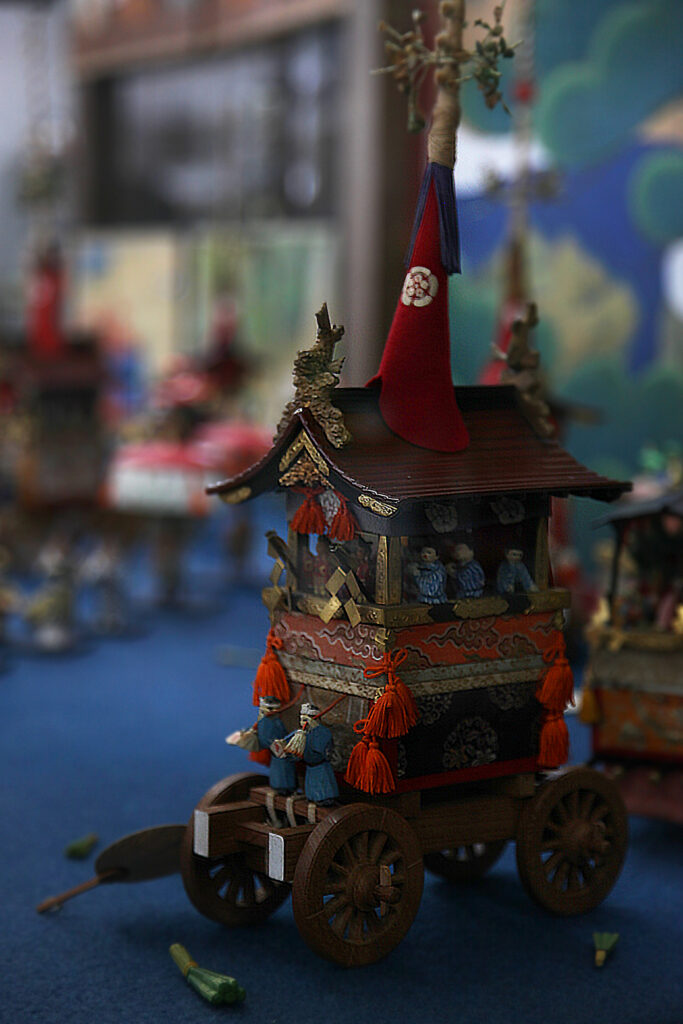
If you can’t make it for either festival, ‘Matsuri-no-Mori’ is a museum dedicated to the famous Takayama Festival. Open all year round, the museum houses miniature versions of the floats used in the festival along with some life-sized versions in the main exhibition space along with giant taiko drums said to be the largest in the world. The museum is open between 9 a.m. and 5 p.m. daily.
7 / HIDA-NO-SATO (HIDA FOLK VILLAGE) / all year round
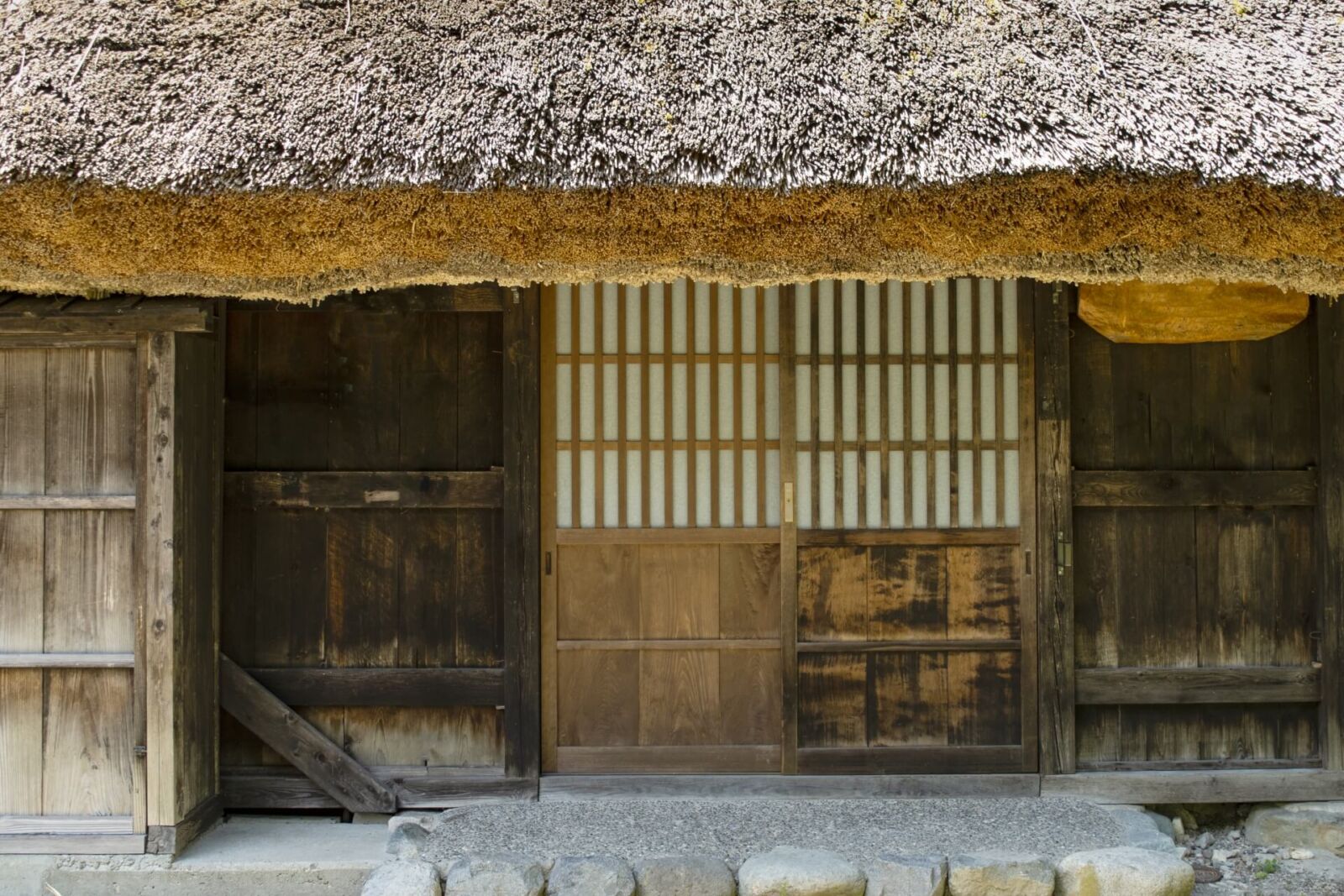
Journey to a simpler time at Hida-no-Sato, an open-air museum where history comes alive through everyday artifacts. Explore over 30 charming buildings, faithfully relocated from the village of Shirakawa-go, each a window into the Edo period. Wander through farmhouses, peek into workshops, and marvel at the ingenuity of thatched roofs and intricate wooden craftsmanship. Discover tools used in daily life, see traditional garments displayed, and let your imagination roam through the stories etched in every beam. No need to trek far – Hida-no-Sato offers a captivating glimpse into rural Japan, just steps away from Takayama’s bustling streets. Immerse yourself in the past, and leave with a lasting impression of life in Edo-era Takayama.
This is a great option if you are visiting Takayama but don’t have the time to visit the World Heritage-listed Shirakawa-go – see below for further details.
8 / HIDA-FURUKAWA / all year round
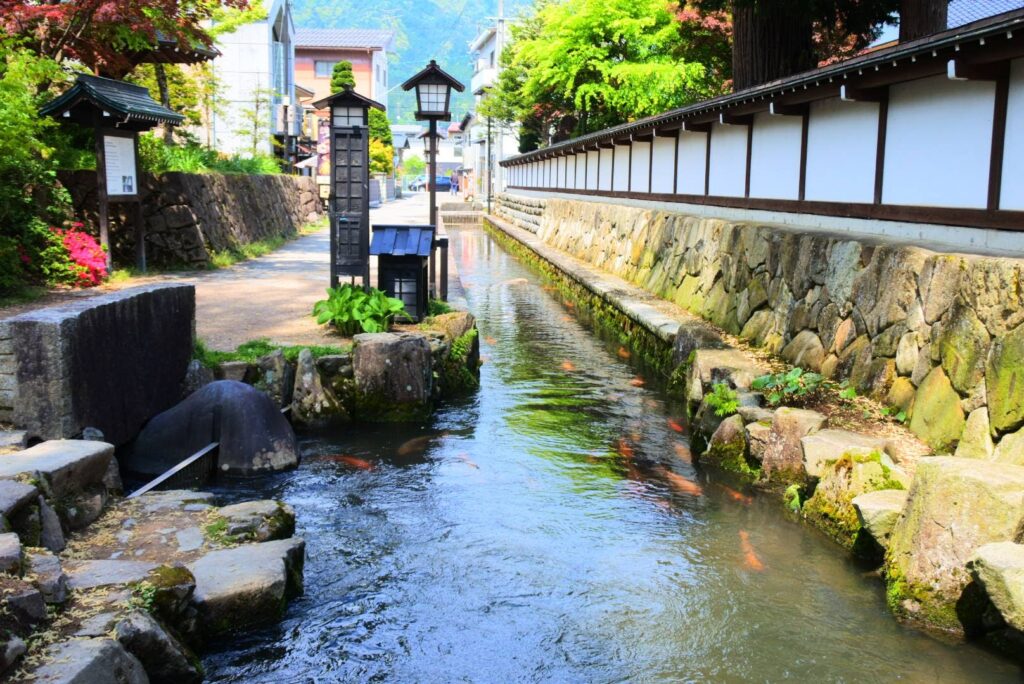
Just a 20-minute train ride north of Takayama lies the town of Hida-Furukawa, a timeless haven. This charming town whispers tales of a bygone era, its narrow lanes lined with wooden buildings that have stood for centuries. Wander along the tranquil Seto Canal, watching playful carp swirl beneath ancient bridges. Soak in the peaceful atmosphere as you browse charming shops filled with handcrafted treasures, each a testament to local artistry. Treat your taste buds to a feast of regional delicacies in hidden eateries, savoring flavors passed down through generations. Or breathe in the aroma of fermenting rice from the centuries-old brewing houses as you wander through the streets of Furukawa.
Experience the serene beauty and rich heritage of Hida-Furukawa. From historic lanes to artisanal crafts, our ‘1-Day Tour from Takayama: Delve into Hida-Furukawa’s Cultural Treasures’ invites you to explore the heart of this timeless town.
1 Day Tour
| 1-Day Tour from Takayama: Delve into Hida-Furukawa’s Cultural Treasures | |
|
| |
| Period | All Year Round |
| Time | 09:30 – 15:30 |
| Meeting Place | Takayama Station |
| Adult Rate | ¥17,800 |
| Child Rate | ¥11,000 |

9 / SHIRAKAWA-GO / all year round

The World Heritage-listed villages of Shirakawa-go and Gokayama are located around one hour from Takayama. The three villages that make-up the grouping are famous for their traditional buildings – some are more than 250 years old – built in the ‘gassho-style’, which means their thatched roofs look like the hands of Buddhist priests pressed together in prayer. They were built in this way to withstand the heavy snows of the region. You can make a reservation to spend the night in one of the old farmhouses or just take a tour. There is also an observation deck above the town which offers an amazingly picturesque view of the town and its mountainous backdrop. During the winter, the town is illuminated on several weekend dates throughout January and February providing a fairy tale-like photo opportunity to capture this unique treasure.
Discover the enchanting beauty of Shirakawa-go on our ‘1-Day Tour from Takayama: Explore Scenic Old Japan in Takayama and Shirakawa-go.’ Journey through time in these historic villages for an unforgettable exploration of traditional Japan.
1 Day Tour
| 1-Day Tour from Takayama: Explore Scenic Old Japan in Takayama and Shirakawa-go | |
|
| |
| Period | All Year Round |
| Time | 09:00 – 18:30 |
| Meeting Place | Takayama Station |
| Adult Rate | ¥20,800 / 22,800 |
| Child Rate | ¥12,000 / 14,000 |

10 / GOKAYAMA / all year round
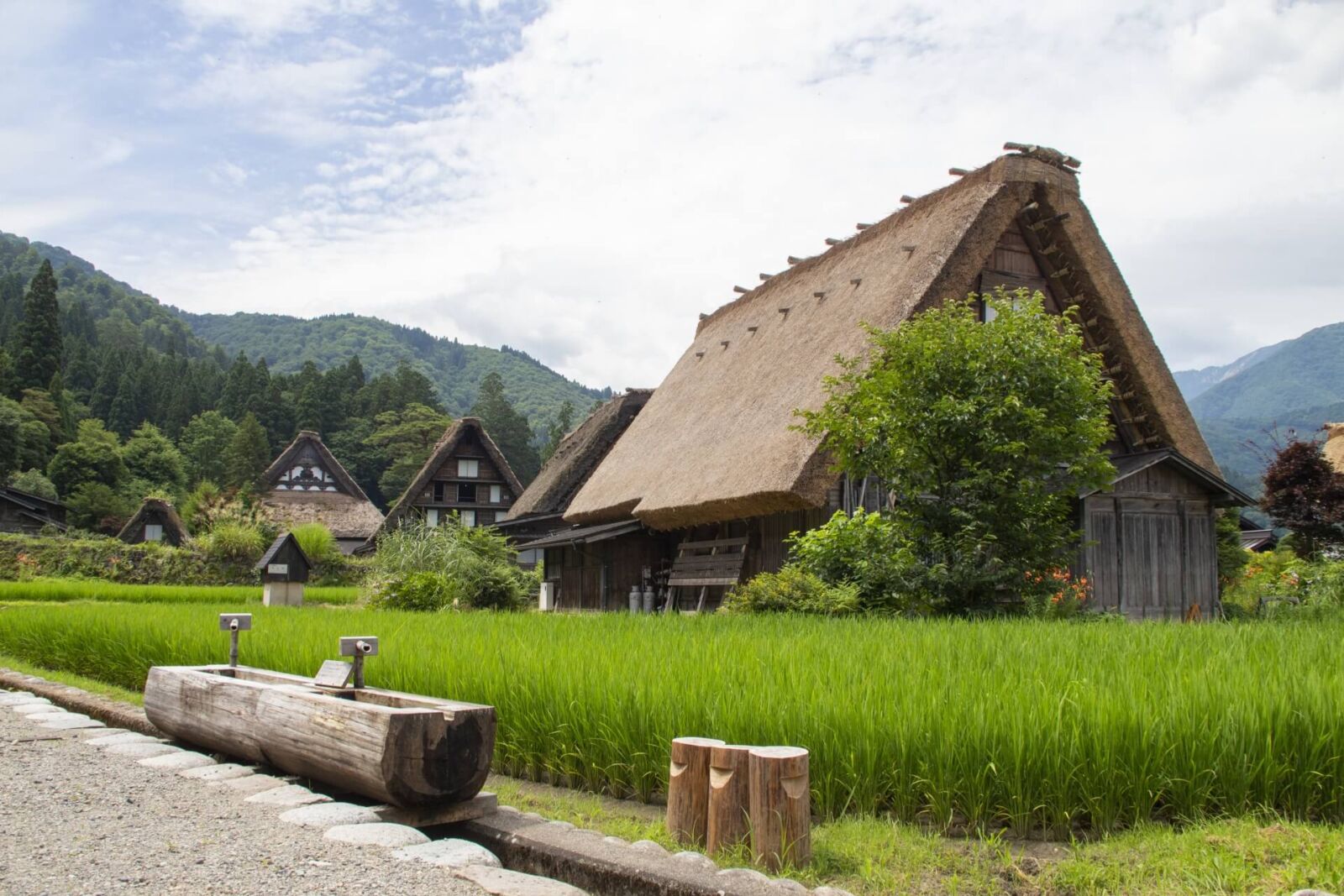
Another World Heritage site for its gassho-style buildings, Gokayama is more remote and hosts fewer tourists than Shirakawa-go. Being more remote, it also requires more effort to reach. The two best-maintained villages in the area are Ainokura, which is the largest, and Suganuma. Many of the farmhouses remain private residences, though some are now used as museums, restaurants, or traveller accommodations. Ainokura features a Japanese washi paper museum where you can try your hand at making it yourself, and Gokayama has a saltpeter museum. These two industries once sustained the region.
Uncover the hidden wonders of Gokayama on our ‘1 Day Tour from Kanazawa: Shirakawa-go, Gokayama and Wood Carving Village.’ Dive into the serene beauty and rich heritage of this less-traveled World Heritage site to experience the unique tranquility and cultural richness of Gokayama.
1 Day Tour
| 1 Day Tour from Kanazawa: Shirakawa-go, Gokayama and Wood Carving Village | |
|
| |
| Period | All Year Round |
| Time | 09:00 – 18:00 |
| Meeting Place | Kanazawa Station |
| Adult Rate | ¥23,800 / 25,800 |
| Child Rate | ¥15,000 / 17,000 |

11 / GUJO HACHIMAN / all year round
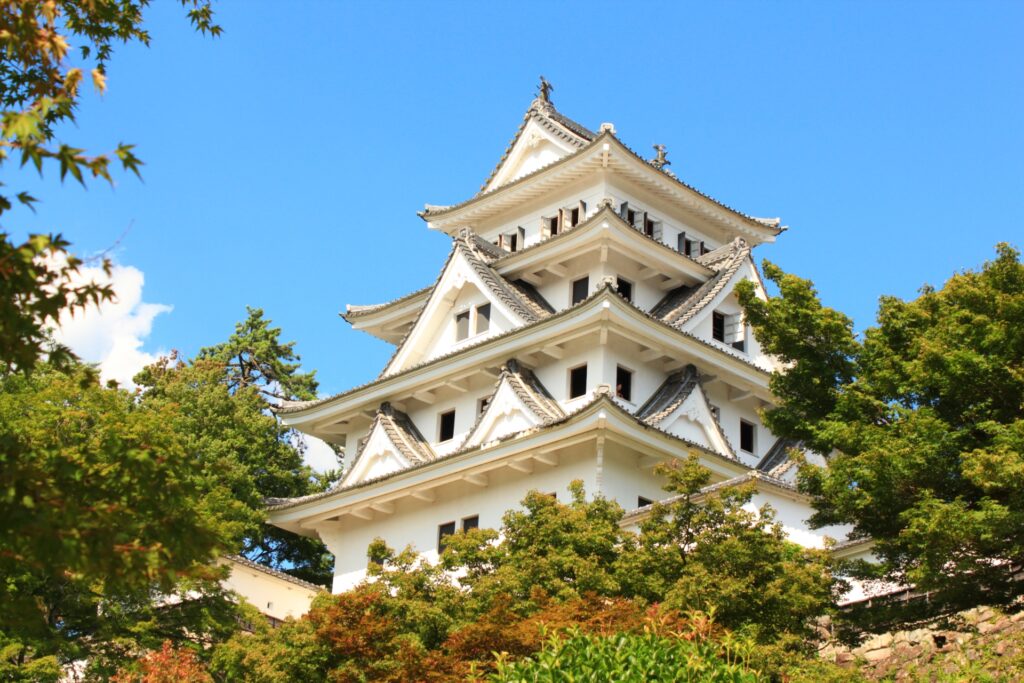
Journey just an hour from Takayama to discover the captivating town of Gujo Hachiman, a place where history and water intertwine. Founded in the 16th century around the majestic Hachiman Castle, this town is a living museum of Japanese heritage. Though the castle we see today was rebuilt in 1933, its hilltop perch offers breathtaking views, a window to the past overlooking the historical town. Wander the streets of Gujo Hachiman, where time slows down in the “Important Preservation District for Groups of Historic Buildings.” Here, traditional houses and age-old practices paint a vivid picture of centuries-old Japan. The town is also a celebration of nature’s gift – water. With its crystal-clear canals and rivers elegantly weaving through the town, Gujo Hachiman is not just a destination but a journey through history, nature, and culture. It’s famous for its summer dance festival, the Gujo Odori, a testament to its rich cultural tapestry, and the craftsmanship of food replicas, which adds a unique flavor to its artistic legacy.
Step back in time with our ‘1-Day Tour from Takayama: Gujo Hachiman – History, Traditions, and Crafts.’ Explore the historic streets, marvel at the craftsmanship, and be enchanted by the town’s natural beauty.
1 Day Tour
| 1-Day Tour from Takayama: Gujo Hachiman -History, Traditions and Crafts | |
| Period | All Year Round |
| Time | 09:00 – 18:30 |
| Meeting Place | Takayama Station |
| Adult Rate | ¥24,800 |
| Child Rate | ¥13,000 |

12 / GERO ONSEN / all year round
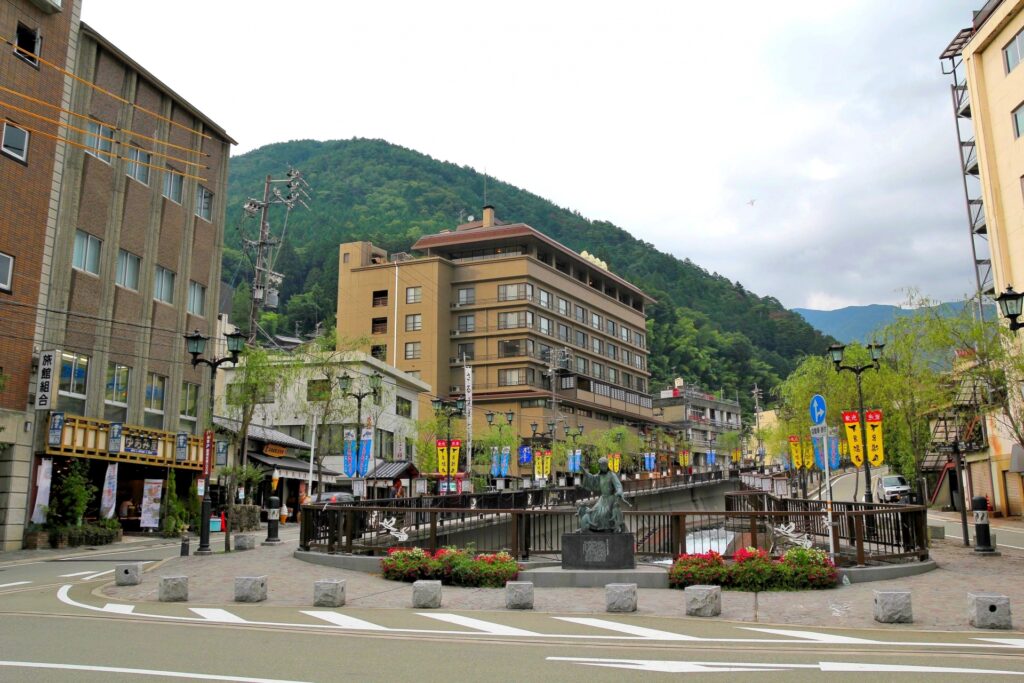
Discover Gero Onsen, renowned since the Edo period as one of Japan’s most famous hot spring towns. Immerse yourself in the therapeutic waters of its famed bathhouses or relax in a traditional Japanese inn. Scattered footbaths throughout the town offer serene moments to soak your feet and unwind. Just above the town, a village of gassho-style buildings offers a picturesque glimpse into historical Japan, resembling of the charm found in Shirakawa-go, providing an alternative for those unable to visit it. Gero Onsen is more than a destination; it’s an experience of rejuvenation and timeless Japanese tradition.
Discover the tranquility of Gero Onsen with our ‘1-Day Tour from Takayama.’ Explore its famous hot springs, gassho-style village, and enjoy a guided journey to relaxation and cultural insight. Perfect for a rejuvenating escape.
1 Day Tour
| 1-Day Tour from Takayama: Unveiling the Charm of Gero Onsen | |
| Period | All Year Round |
| Time | 09:30 – 17:30 |
| Meeting Place | Takayama Station |
| Adult Rate | ¥19,800 |
| Child Rate | ¥13,000 |

13 / SHINHOTAKA ROPEWAY / all year round
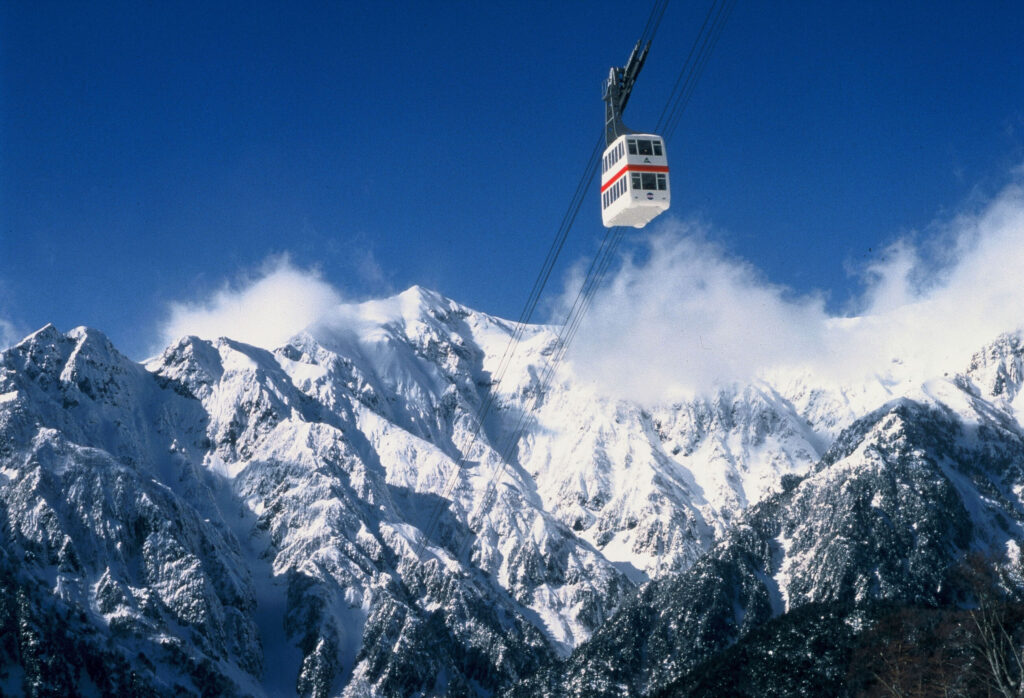
Embark on a skyward journey with the Shinhotaka Ropeway, where two double-decker cable cars ascend over 2,000 meters, ushering you into the realm of clouds. At this breathtaking altitude, a 360-degree panoramic view of the Japanese Alps awaits, offering an unparalleled spectacle of nature’s grandeur. While the ropeway operates daily, its schedule is attuned to the whims of the weather, ensuring a safe and mesmerizing experience.
In winter, witness a wonderland as over three meters of snow transform the mountaintop into a majestic snow corridor. Come fall, the landscape morphs into a canvas of vibrant colors, with extended gondola hours to savor the autumnal splendor. Beyond the awe-inspiring views, discover the serenity of nature trails and the rejuvenating hot spring baths at the ropeway stations, each a haven of natural beauty and tranquility.
Ascend to new heights on our ‘1-Day Tour from Takayama: Hida’s Hidden Gems – Caves, Bears, and the Shinhotaka Ropeway.’ Experience the awe of the Japanese Alps from the Shinhotaka Ropeway, explore enchanting caves, encounter majestic bears, and be captivated by the wonders of Hida.
1 Day Tour
| 1-Day Tour from Takayama: Hida’s Hidden Gems – Limestone Caves and the Shinhotaka Ropeway | |
|
| |
| Period | All Year Round |
| Time | 09:00 – 17:30 |
| Meeting Place | Takayama Station |
| Adult Rate | ¥28,800 |
| Child Rate | ¥23,000 |

14 / KAMIKOCHI / April to November
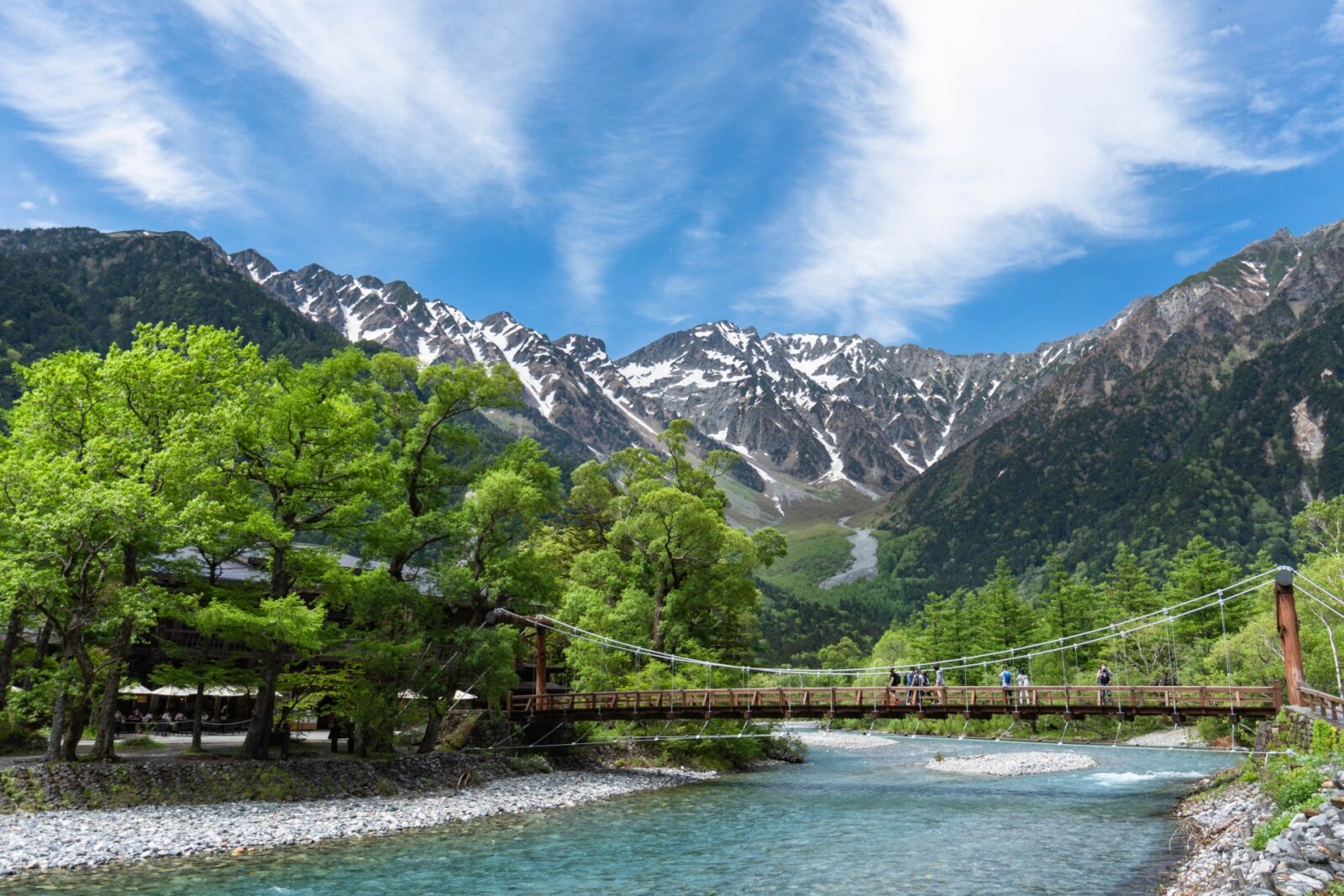
1 Day Tour
| 1-Day Tour from Takayama: Cultural Heritage and Kamikochi’s Alpine Beauty | |
| Period | April – November |
| Time | 09:30 – 18:00 |
| Meeting Place | Takayama Station |
| Adult Rate | ¥25,800 |
| Child Rate | ¥14,900 |

Kamikochi is nestled in the heart of the Japan Alps, a serene alpine paradise cradled between Takayama and Matsumoto. It’s a land where the majestic Mt. Yakedake, the only active volcano in the northern Alps, stands guard over pristine landscapes. From mid-April to mid-November, Kamikochi welcomes nature enthusiasts to its network of hiking trails winding through breathtaking scenery. Nestled within the Chubu Sangaku National Park, this sanctuary is a testament to nature’s splendor, carefully preserved and conserved for future generations. Here, amidst the tranquility of towering mountains and reflective waters, the spirit of the Alps is alive and thriving.
Embark on an epic journey with our ‘(Green Season) 4-Day Tour from Nagano to Kanazawa: The Ultimate Central Japan Tour.’ Unveil the secrets of Kamikochi’s Alpine beauty, explore historic towns, and embrace the rich culture of Central Japan for an unforgettable exploration of Japan’s heartland.
4 Day Tour
| (Green Season) 4-Day Tour from Nagano to Kanazawa: The Ultimate Central Japan Tour | |
| Period | April to November |
| Time | Day 1: 9:35 ~ Day 4: 18:00 |
| Meeting Place | Hotel Kokusai 21 / Nagano Station |
| Adult Rate | ¥99,000 |
| Child Rate | ¥83,000 |

15 / OKUHIDA ONSEN-KYO inc. HIRAYU ONSEN / all year round
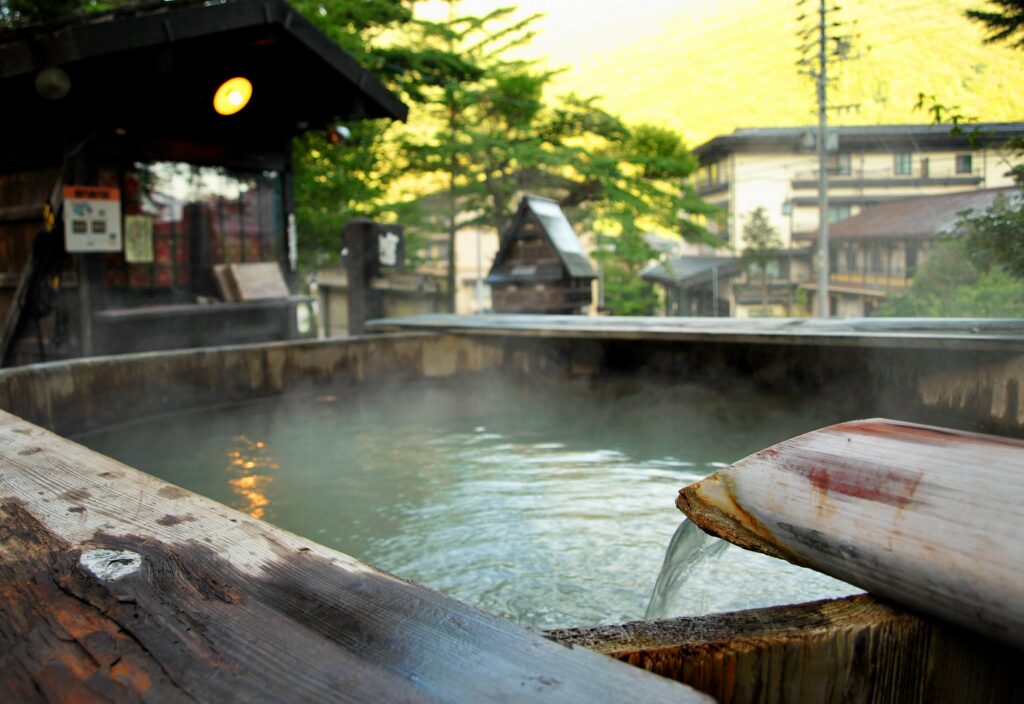
In the heart of the Japanese Alps lies Okuhida Onsen, home to five distinct onsen towns, with Hirayu Onsen being the oldest and largest. Discovered in the mid-16th century, Hirayu is renowned for its two main public hot springs and numerous private onsens in local inns, accessible to day visitors for a small fee. Beyond its therapeutic waters, Hirayu offers easy access to the alpine beauty of Kamikochi and Shinhotaka, as well as the cultural treasures of Matsumoto, all within reach from Takayama. This tranquil onsen town invites you to unwind in its healing waters and explore the natural and historical wonders of the region.
16 / SHIRAHONE ONSEN / all year round
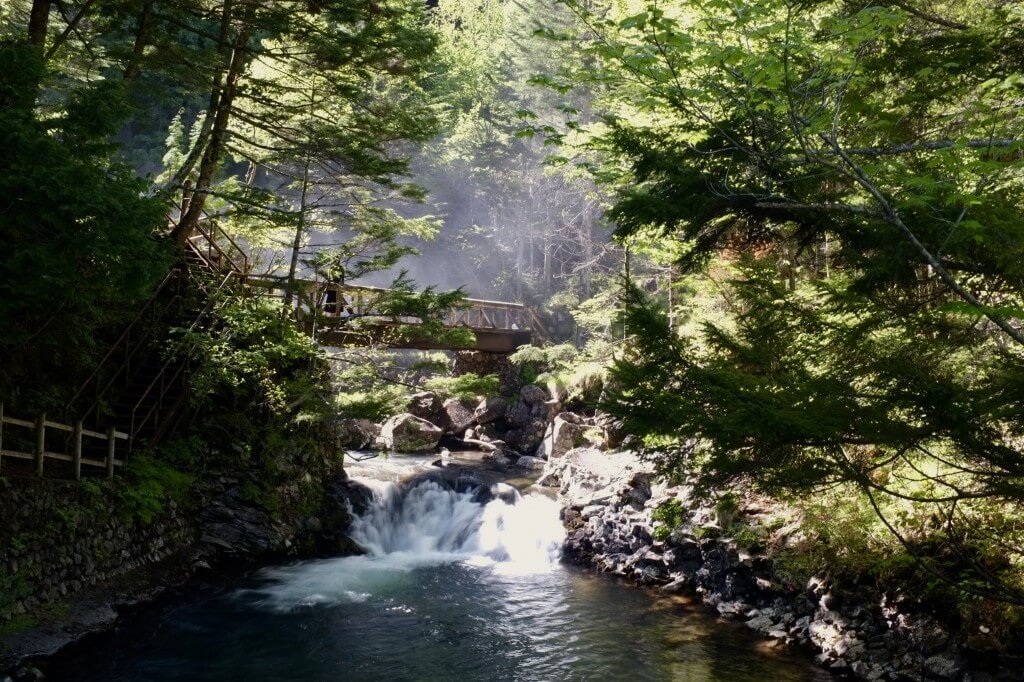
Nestled in the embrace of Matsumoto City, near the eastern slopes of Mount Norikura, lies the enchanting Shirahone Onsen. Its name, translating to ‘white bone hot spring’, paints a vivid picture of its unique milky white waters – a serene spectacle born from the union of high calcium and magnesium with the air’s oxygen. These waters, steeped in over 400 years of history, are not just visually striking; they are whispered to hold medicinal and restorative powers. Legend even has it that a three-day immersion in Shirahone’s mystical waters can keep colds at bay for three years. This hot spring isn’t just a place; it’s a realm of healing and folklore, inviting you to experience the blend of natural wonder and ancient wisdom.
17 / MATSUMOTO CASTLE / all year round
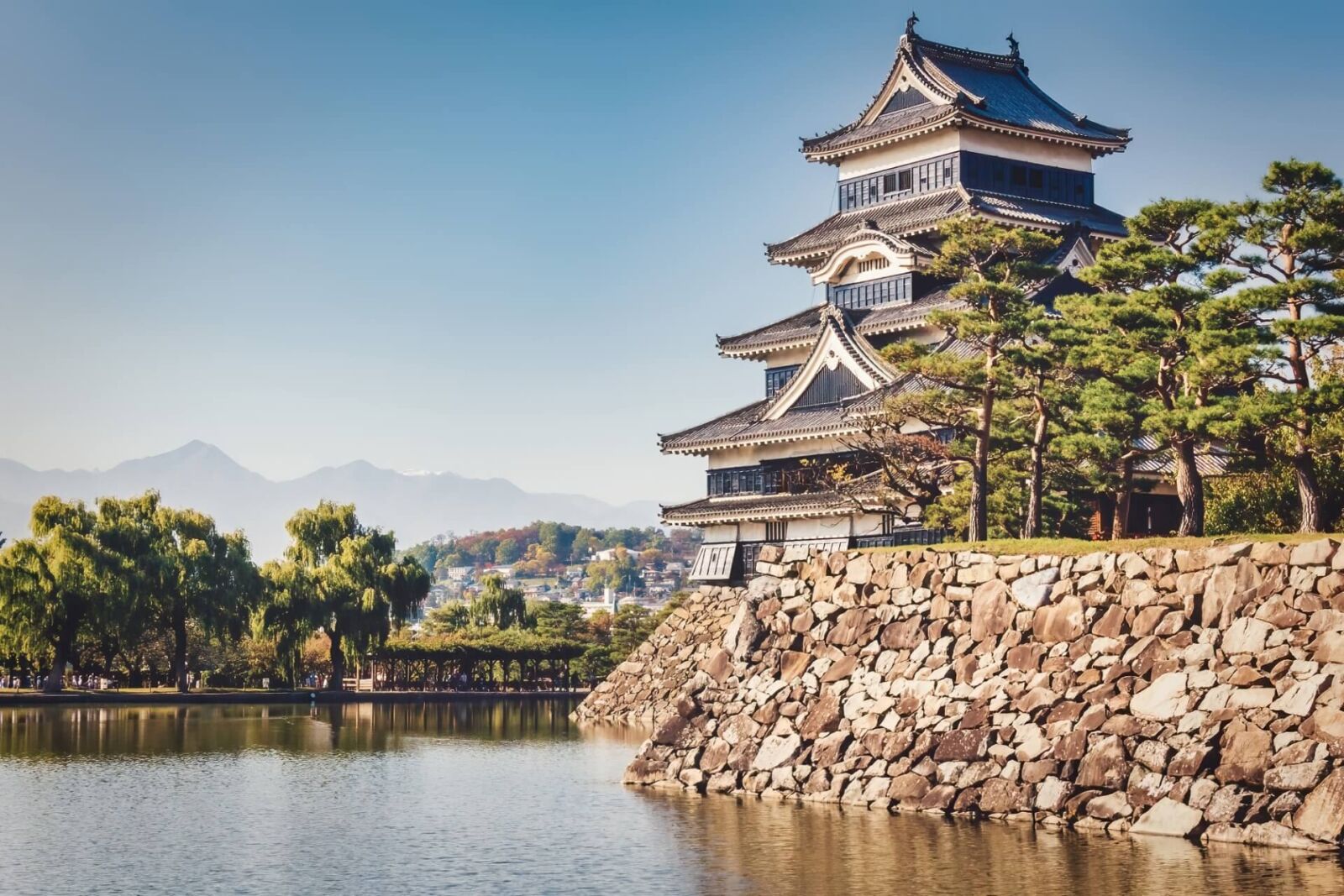
1 Day Tour
| 1-Day Tour from Nagano and Matsumoto: Experience Matsumoto Castle and Narai-juku | |
|
| |
| Period | All Year Round |
| Time | 08:15 – 18:15 |
| Meeting Place | Nagano Station Matsumoto Station |
| Adult Rate | ¥23,800 |
| Child Rate | ¥11,900 |

Behold the legendary “Crow Castle,” a striking masterpiece shrouded in history, nestled in Matsumoto. With its distinctive black exterior, Matsumoto Castle is among Japan’s illustrious trio of historic castles. What makes it truly exceptional is its resolute keep, standing tall since the 16th century with its original wooden structure intact, earning the title of Japan’s oldest surviving castle. Every season unveils a different facet of its grandeur, but spring emerges as a time of enchantment when cherry blossoms paint the castle’s surroundings with ethereal beauty.
Wander beyond the castle’s gates, and you’ll find yourself on Nawate-dori, a 200-meter stretch between the castle’s south moat and the tranquil Metoba River. This charming avenue is fondly known as “Frog Street,” a whimsical tribute to the countless (though inanimate) frogs of all shapes and sizes that call it home. Matsumoto Castle isn’t just a historic relic; it’s a living testament to Japan’s rich heritage and an invitation to explore its captivating stories.
Discover the essence of Japan’s heartland hassle-free on our ‘2-Day Snow Monkey Tour: Nagano To Takayama via Matsumoto.’ From exploring Zenko-ji Temple and the Snow Monkey Park to Matsumoto Castle and alpine vistas, your journey is covered. If you’re planning to travel through central Japan and desire a convenient route to end in Takayama, this is the perfect choice.
2 Day Tour
| 2-Day Snow Monkey Tour: Nagano To Takayama via Matsumoto | |
|
| |
| Period | All Year Round |
| Time | (Day1) 09:35 – 17:35 (Day2) 08:30 – 16:00 |
| Meeting Place | (Day 1) Nagano Station (Day 2) Hotel Kokusai |
| Adult Rate | ¥88,000 |
| Child Rate | ¥70,000 |

18 / TATEYAMA-KUROBE ALPINE ROUTE / April to November
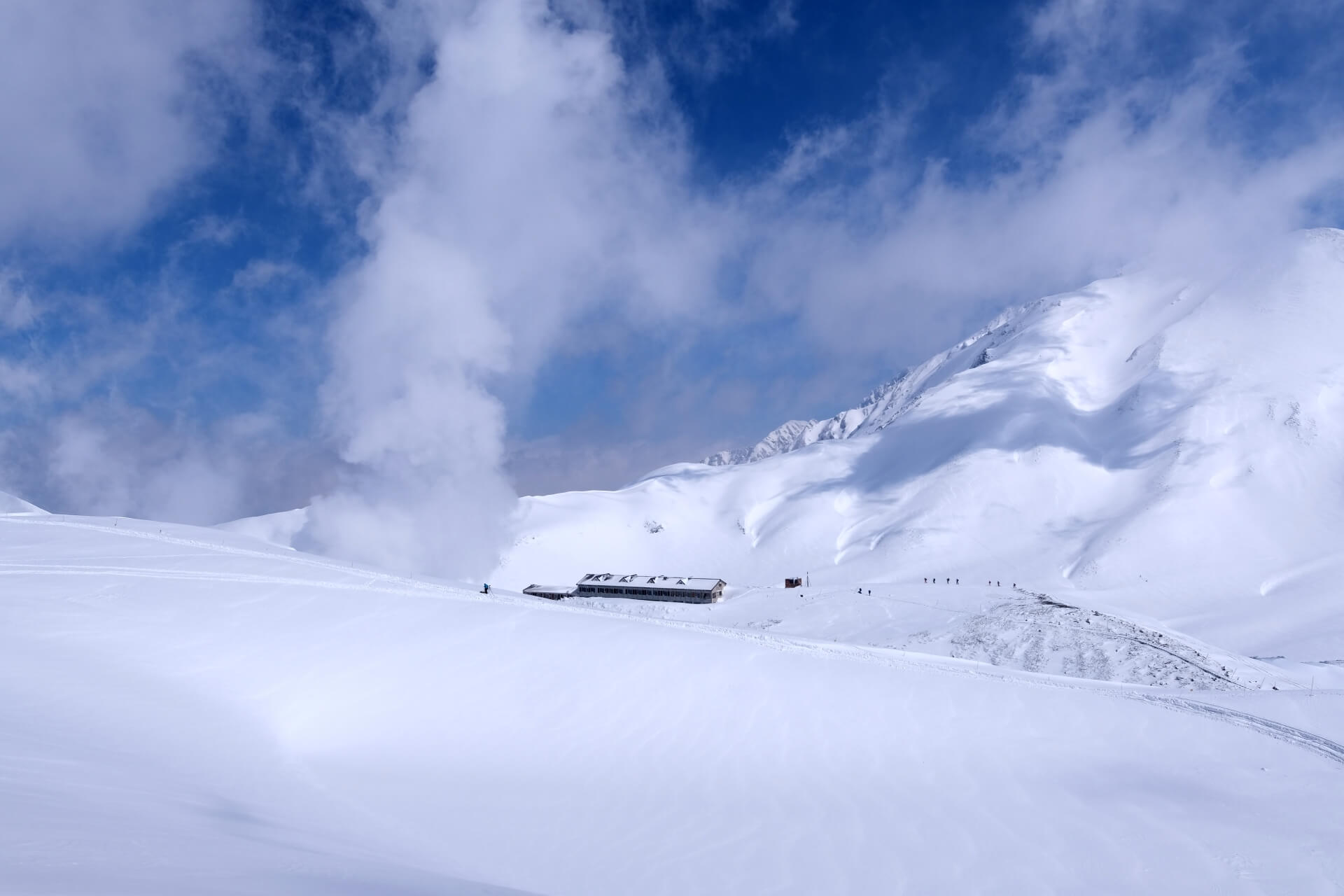
Step into a world of wonder during your visit to Takayama, especially in spring and early summer when nature unveils its awe-inspiring creation—the snow walls of the Tateyama-Kurobe Alpine Route. These towering snow walls, soaring up to 20 meters high, are a testament to the region’s legendary snowfall, making it one of Japan’s most exceptional and sought-after destinations. Witnessing this surreal landscape is a journey into the heart of nature’s grandeur, in a region renowned for receiving some of the heaviest snowfall in the world.
Embark on an unforgettable journey to witness the breathtaking ‘Snow Walls of Tateyama-Kurobe Alpine Route.’ Join our [Spring Only] 1-Day Tour from Nagano and immerse yourself in this natural wonder.
1 Day Tour
| [Spring Only] 1-Day Tour from Nagano: Snow Walls of Tateyama-Kurobe Alpine Route | |
|
| |
| Period | April to June |
| Time | 07:50/08:15 – 18:00-19:00 |
| Meeting Place | Hotel Kokusai 21 Nagano Station |
| Adult Rate | ¥30,000 |
| Child Rate | ¥23,800 |

19 / KANAZAWA / all year round
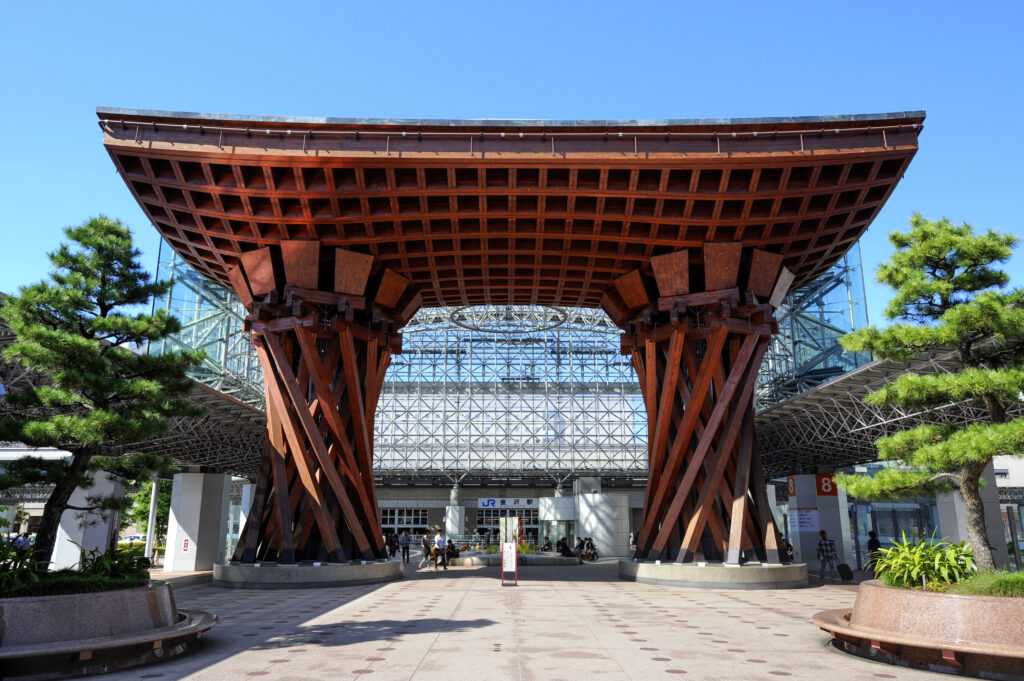
Kanazawa is the capital of Ishikawa Prefecture and situated along the Japan Sea coast approximately two hours northwest of Takayama. Kanazawa is perhaps most famous for Kenrokuen Garden, which is one of Japan’s three great gardens, and it is said to have been created by the feudal lords that ruled the domain in the 1600’s. Having escaped the bombings of World War II, there are still many areas of the city that remain relatively untouched since ancient times including the former samurai district of Nagamachi and the Nishi-Chaya geisha district – a city full of fantastic attractions both historic and modern.
Explore Kanazawa’s rich history and culture on our ‘1-Day Tour from Kanazawa: Samurai, Matcha, Gardens, and Geisha.’
1 Day Tour
| 1-Day Tour from Kanazawa: Samurai, Matcha, Gardens and Geisha | |
|
| |
| Period | All Year Round |
| Time | 09:00 – 17:30 |
| Meeting Place | Kanazawa Station |
| Adult Rate | ¥17,800 |
| Child Rate | ¥11,000 |

20 / TOYAMA / all year round
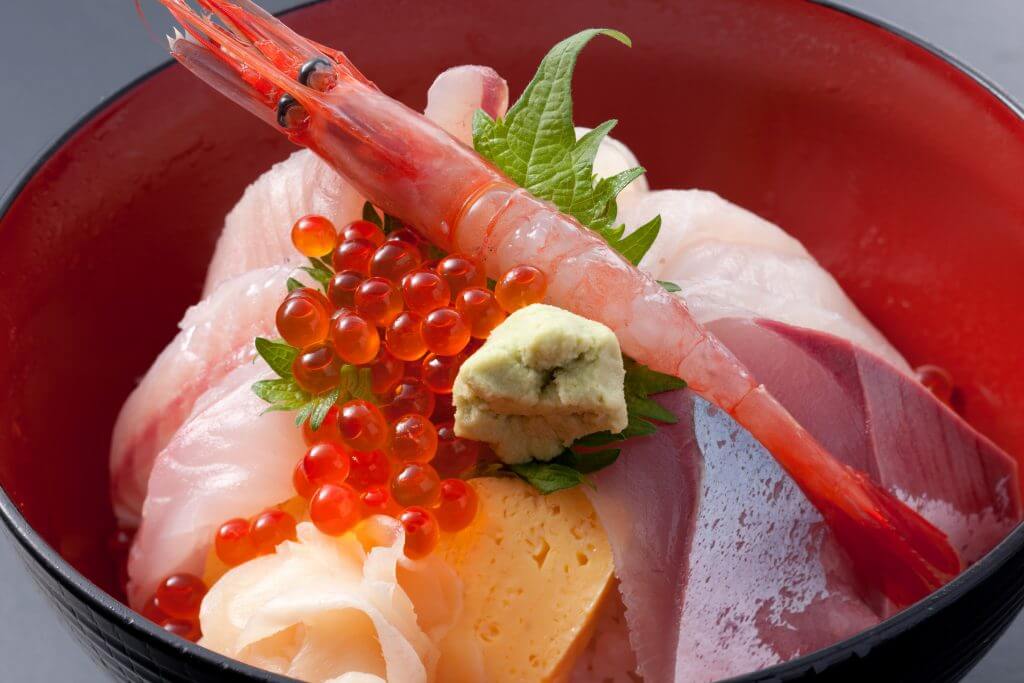
Sitting to the north of Takayama, the coastal city of Toyama can be reached using the Limited Express Hida service. Located nearby Toyama Bay, the region is known throughout Japan for its fantastic seafood. One of the great pleasures of visiting the city is trying its famous seafood, best experienced at the seafood markets on the coast or at one of the many seafood restaurants dotted throughout the city. Toyama is a modern and youthful city without the crowds of nearby Kanazawa making it an attractive and convenient option for many travellers.
21 / WALK THE HISTORIC NAKASENDO TRAIL / best: April to November
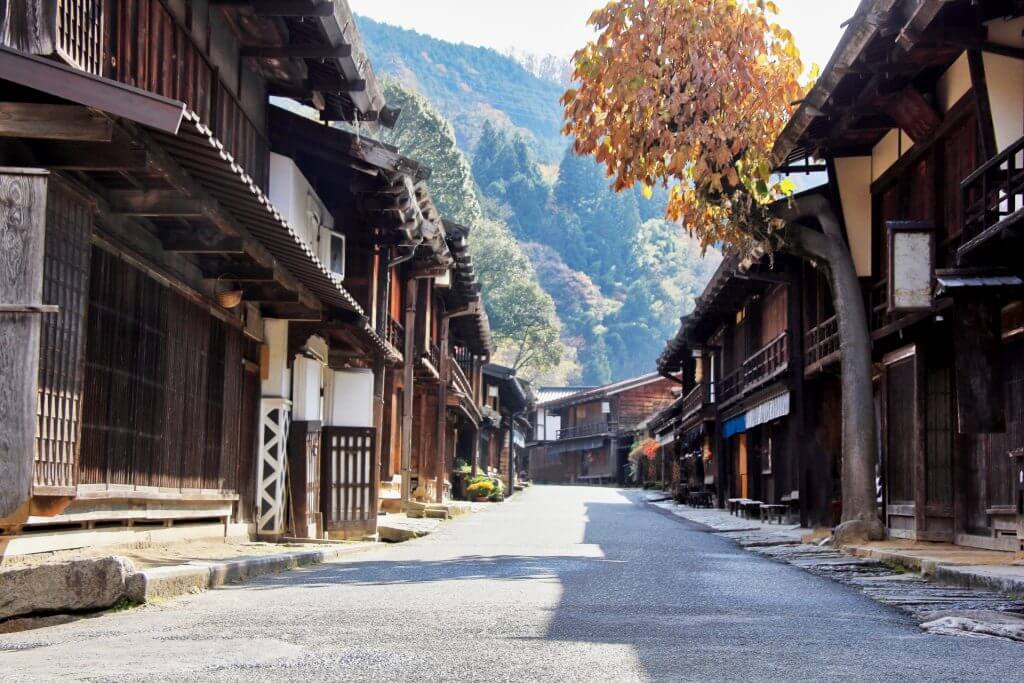
During the Edo Period (1603-1868), the ‘Nakasendo’ was an important route connecting Tokyo – then called ‘Edo’ – and Kyoto. Along the route, numerous ‘postal towns’ developed to provide services such as accommodation, food, transport and protection to travellers and merchants who were of course taxed. Many of the towns accumulated great wealth as a result and today, several remain beautifully preserved – best enjoyed on-foot as you walk the historic trail.
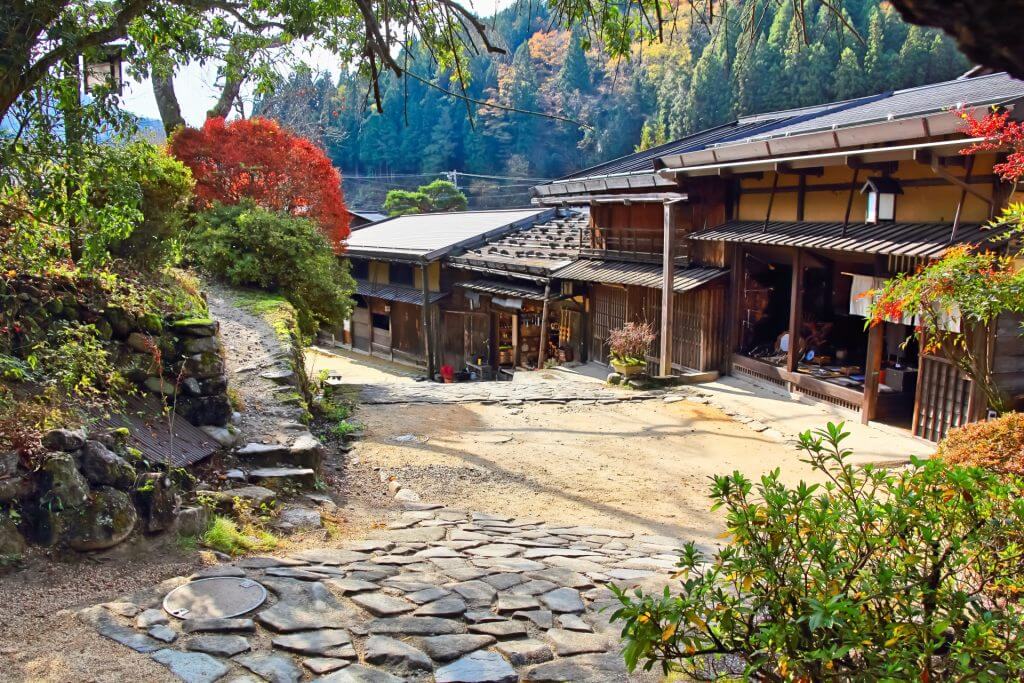
When traveling from Takayama towards Nagano, the first post town you will come upon is Magome. The path to the next post town, Tsumago, remains intact to this day and many travellers both domestic and international enjoy slipping back in time for the duration of the 2 – 3 hour hike and experiencing what it was like hundreds of years ago to make this journey. Further north is Narai, unique because the town is not only well-preserved, most of the buildings are still inhabited by locals.
Experience a journey through history with our ‘1-Day Tour from Matsumoto: Step into the Past on the Nakasendo.’ Wander along the ancient route between Magome and Tsumago, where time stands still in charming postal towns.
1 Day Tour
| 1-Day Tour from Nagano & Matsumoto: Step into the Past on the Nakasendo | |
|
| |
| Period | September to December, April to June |
| Time | 08:15 – 18:30 |
| Meeting Place | Nagano Station Matsumoto Station |
| Adult Rate | ¥24,900 |
| Child Rate | ¥12,900 |

22 / KISO-ONTAKE MOUNTAIN RANGE & KISO VALLEY / all year round
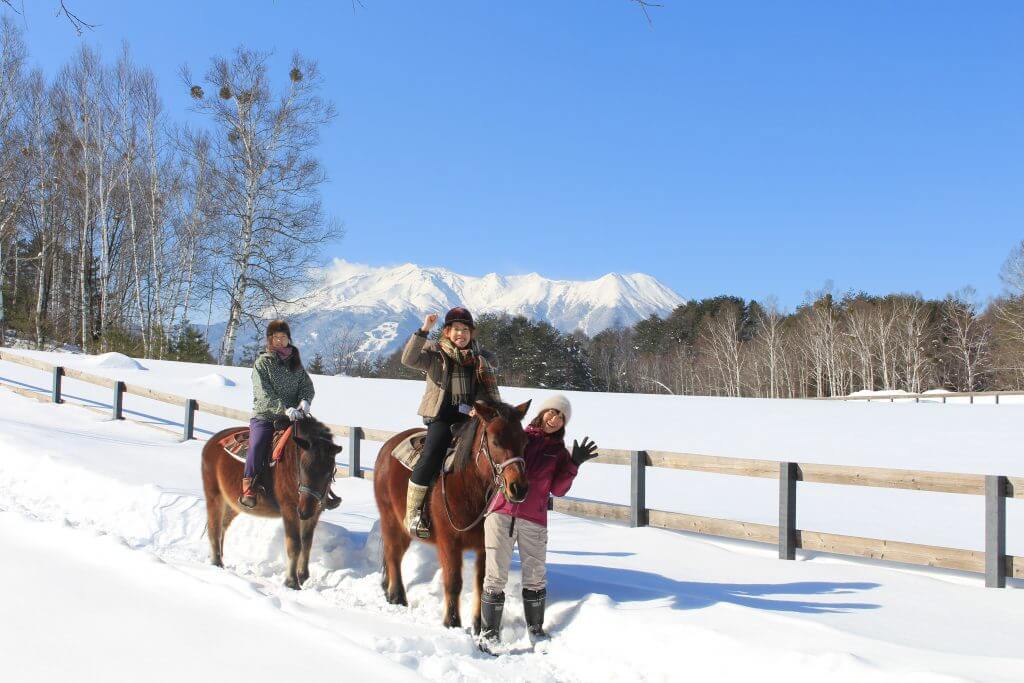
The Kiso Ontake Mountain Range is one of several dramatic and beautiful alpine areas covering Central Japan. Dominated by the imposing volcanic peak of Mount Ontake – Japan’s second highest volcano behind Fuji – the region is known for its pristine nature, lush landscapes and emerald water of its rivers and gorges. The geography of the mountain range including its rugged and high peaks, dense forests and deep gorge made the region somewhat inaccessible until modern times, and in doing so, allowed a strong and independent culture to develop; and though modern infrastructure has now opened Kiso Ontake to the wider world, it retains much of its historic character and maintains many traditions.
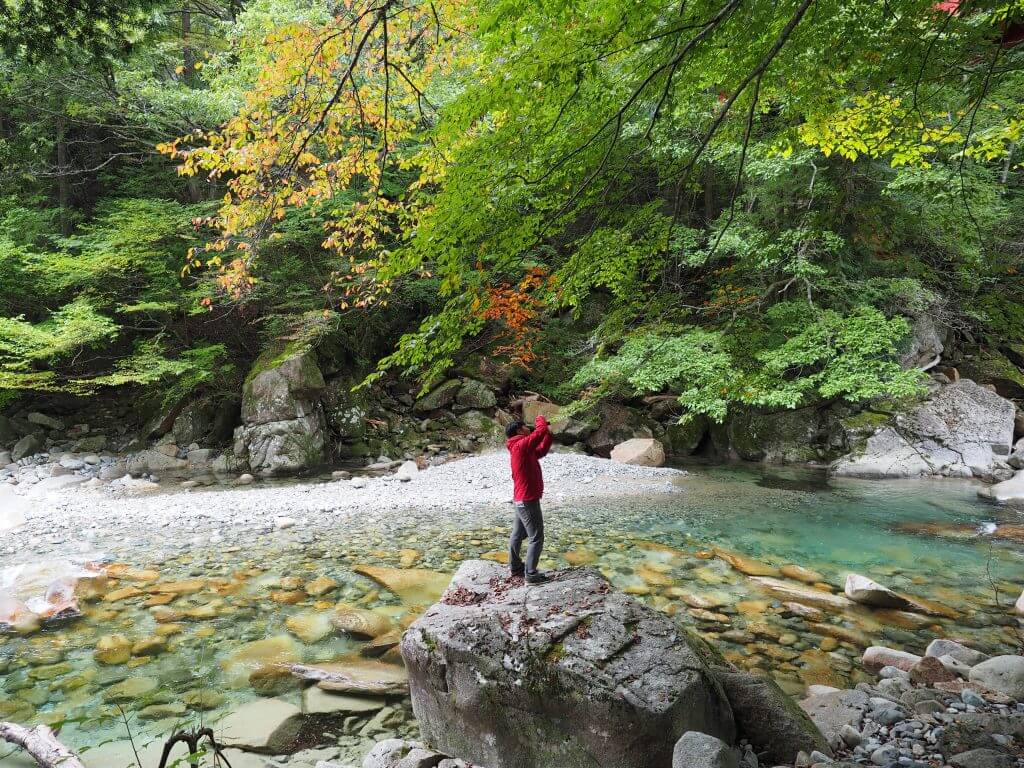
Blessed with rare natural beauty the Kiso Ontake Mountain Range includes the stunning Kiso Valley and the most famous section of the Nakasendo, including the beautiful postal towns of Narai, Magome and Tsumago, which can still be walked today. Somewhat undiscovered by international visitors, exploring Kiso Ontake and the Kiso Valley takes you deep into the heart of Central Japan.
23 / SKI RESORTS OF CENTRAL JAPAN / December to April
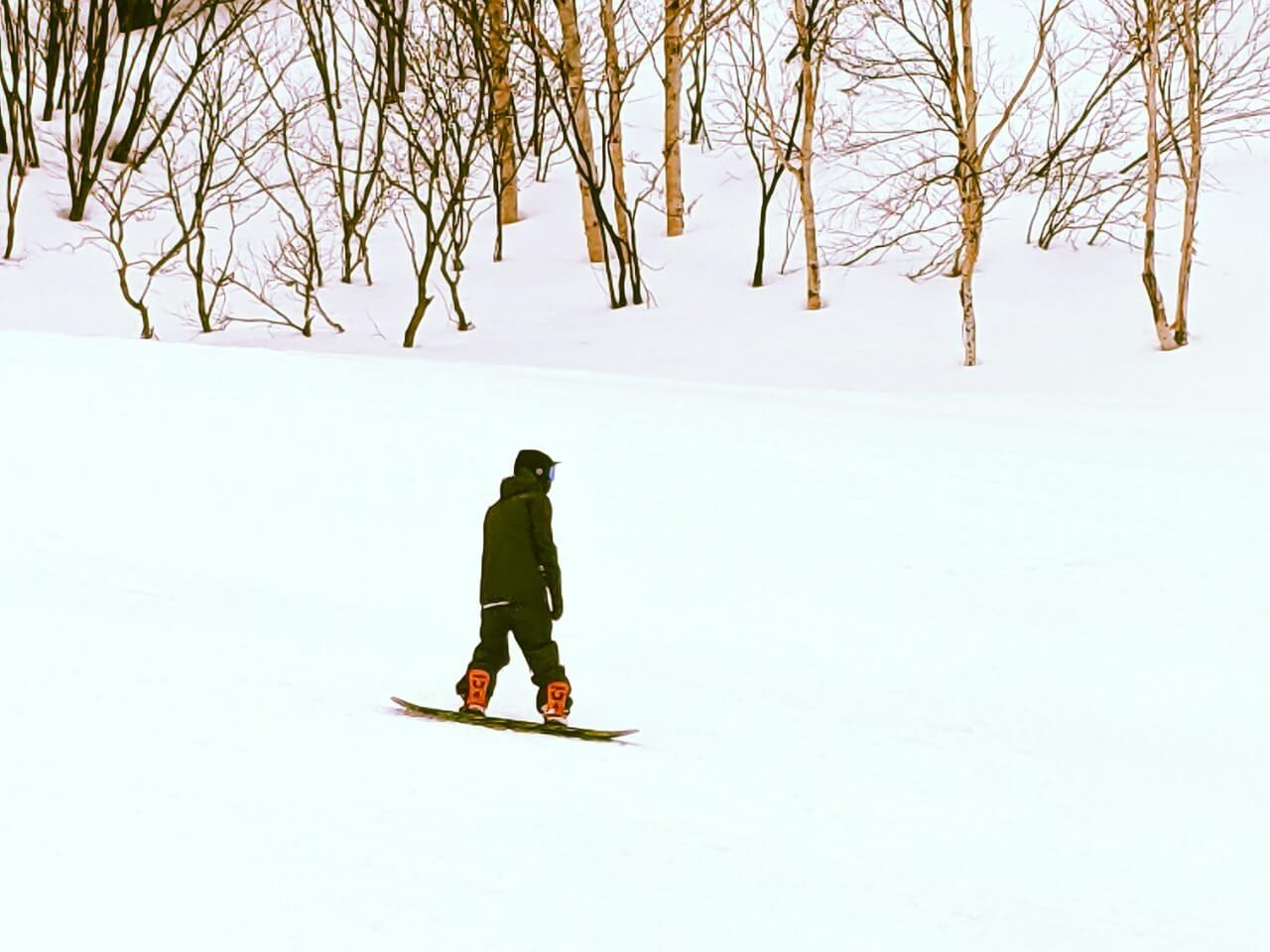

Sitting in the heart of Central Japan, visitors to Takayama can enjoy some of Asia’s best skiing and snowboarding at any of the region’s fantastic resorts! Our ‘Japan Ski Resorts’ page has everything you need to know to plan, book and get the most out of your winter to getaway or jump straight to our ’35 Best Ski Resorts in Japan’ page for tips and suggestions of the resort that suits you best!
24 / ADVENTURE TRAVEL IN CENTRAL JAPAN! / all year round
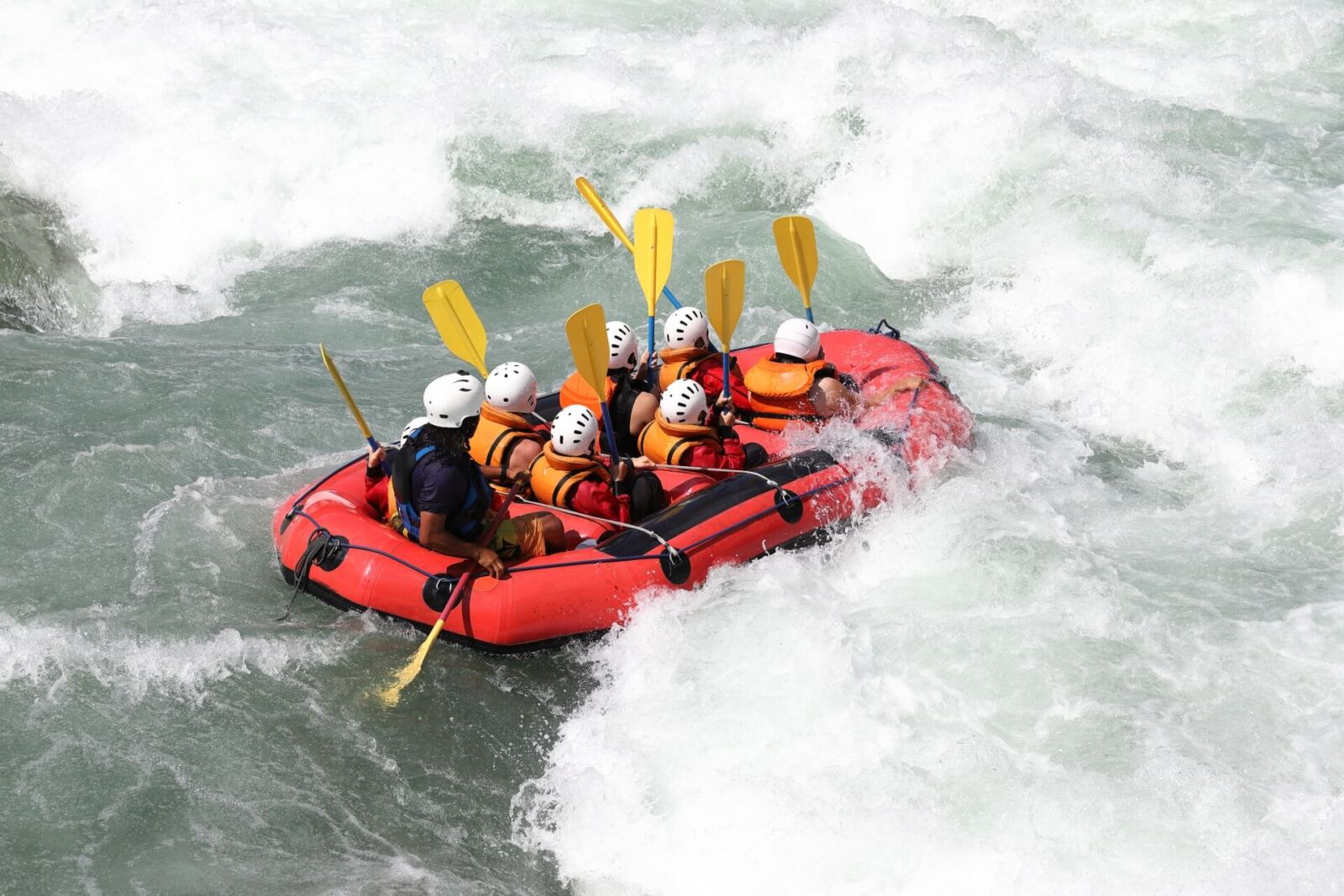
Boasting the majority of Japan’s tallest mountains and the most ski resorts in the country, along with pristine forests, rivers, lakes and multiple national parks, Central Japan is without question a true adventure travel hot-spot. From world-class skiing and snowboarding to outstanding hiking and mountaineering, rafting, wildlife experiences and more, Japan has loads to offer when it comes to adventure travel including experiences that straddle and blur the line between adventure, culture and spirituality in uniquely Japanese ways. For more information, see our ‘Japan Adventure Travel’ page.
25 / JIGOKUDANI MONKEY PARK / all year round


Take advantage of one of the tours we offer by traveling from Takayama to Nagano to see the world-famous snow monkeys at the Jigokudani Monkey Park. This park was established as a refuge for the Japanese macaques within their natural environment in the 1960’s, and the troop living here is the only know troop to bathe in the hot onsen waters to warm themselves in winter. The monkeys visit the park year-round, so you don’t have to worry about not getting to see them up close.
Looking to start with Nagano’s enchanting Snow Monkeys and end your journey in picturesque Takayama? Our ‘2-Day Snow Monkey Tour: Nagano To Takayama via Matsumoto’ is your ideal choice. Explore ancient temples and majestic castles, then transition smoothly to Takayama, an ideal next stop. Book now for a journey that beautifully connects Japan’s natural wonders with its cultural charm.
2 Day Tour
| 2-Day Snow Monkey Tour: Nagano To Takayama via Matsumoto | |
|
| |
| Period | All Year Round |
| Time | (Day1) 09:35 – 17:35 (Day2) 08:30 – 16:00 |
| Meeting Place | (Day 1) Nagano Station (Day 2) Hotel Kokusai |
| Adult Rate | ¥88,000 |
| Child Rate | ¥70,000 |

Explore from Nagano’s Snow Monkeys to Takayama’s charm, through Shirakawa-go’s scenic beauty, and end in Kanazawa’s historical grandeur with our ‘(Green Season) 4-Day Tour from Nagano to Kanazawa.’ This journey links Japan’s natural wonders, cultural depths, and rich history in one unforgettable experience. Book now to explore the diverse landscapes and heritage of central Japan.
4 Day Tour
| (Green Season) 4-Day Tour from Nagano to Kanazawa: The Ultimate Central Japan Tour | |
| Period | April to November |
| Time | Day 1: 9:35 ~ Day 4: 18:00 |
| Meeting Place | Hotel Kokusai 21 / Nagano Station |
| Adult Rate | ¥99,000 |
| Child Rate | ¥83,000 |

BEST TOURS AND ITINERARIES IN TAKAYAMA & SHIRAKAWA-GO
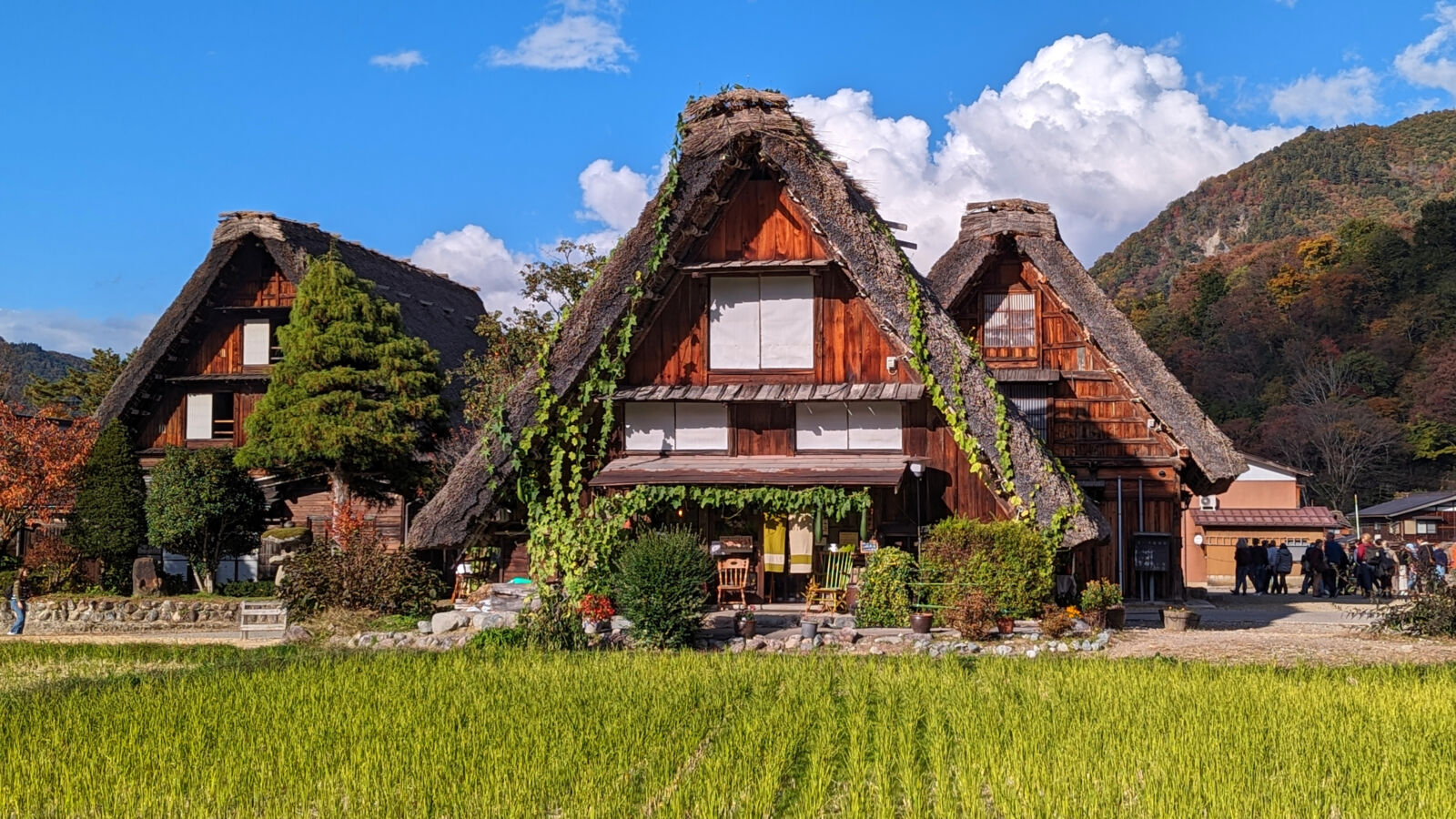
Explore the best of what Takayama and Shirakawa-go have to offer with our best tours and itineraries, meticulously designed to showcase the regions’ cultural richness and natural beauty. Delve into the heart of Takayama’s historic charm, wandering through its well-preserved, Edo-period streets, or experience the idyllic tranquility of Shirakawa-go, a village famed for its traditional gassho-zukuri farmhouses. Our expertly curated experiences provide insightful guided tours, exclusive activities, and a deep dive into the local cuisine, ensuring a comprehensive exploration of these iconic destinations. Whether your passion lies in history, nature, or culture, our wide array of itineraries caters to every interest, offering a personalized journey into the essence of these enchanting locales. Embark on an unforgettable adventure with our top-rated tours and itineraries, and immerse yourself in the captivating beauty and enduring traditions of Takayama and Shirakawa-go. To discover the full range of unique adventures we offer, visit our Best Tours and Itineraries in Takayama and Shirakawa-go page.
WHERE TO STAY WHEN VISITING TAKAYAMA?
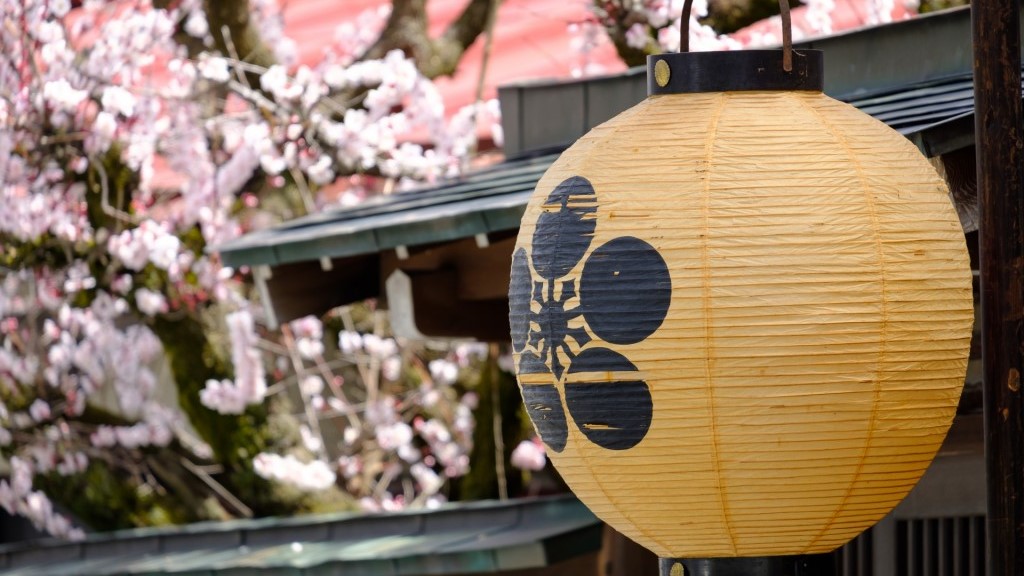
Our ‘Best Places to Stay in Takayama’ page includes our suggestions of the best areas to find accommodation in and around the city. Most people heading to Takayama are drawn to the city by its beautifully preserved buildings, traditional craft scene and great food. As such, many travellers also want to stay in the old town and enjoy a traditional guesthouse. Takayama offers some great accommodation in and around the old town however don’t feel it’s your only option when staying there. It is a small city in which demand for accommodation often outstrips supply. The best accommodation often books-out well in advance, so staying outside of Takayama and visiting as a day-trip can also be a good option.
HOW TO GET TO TAKAYAMA
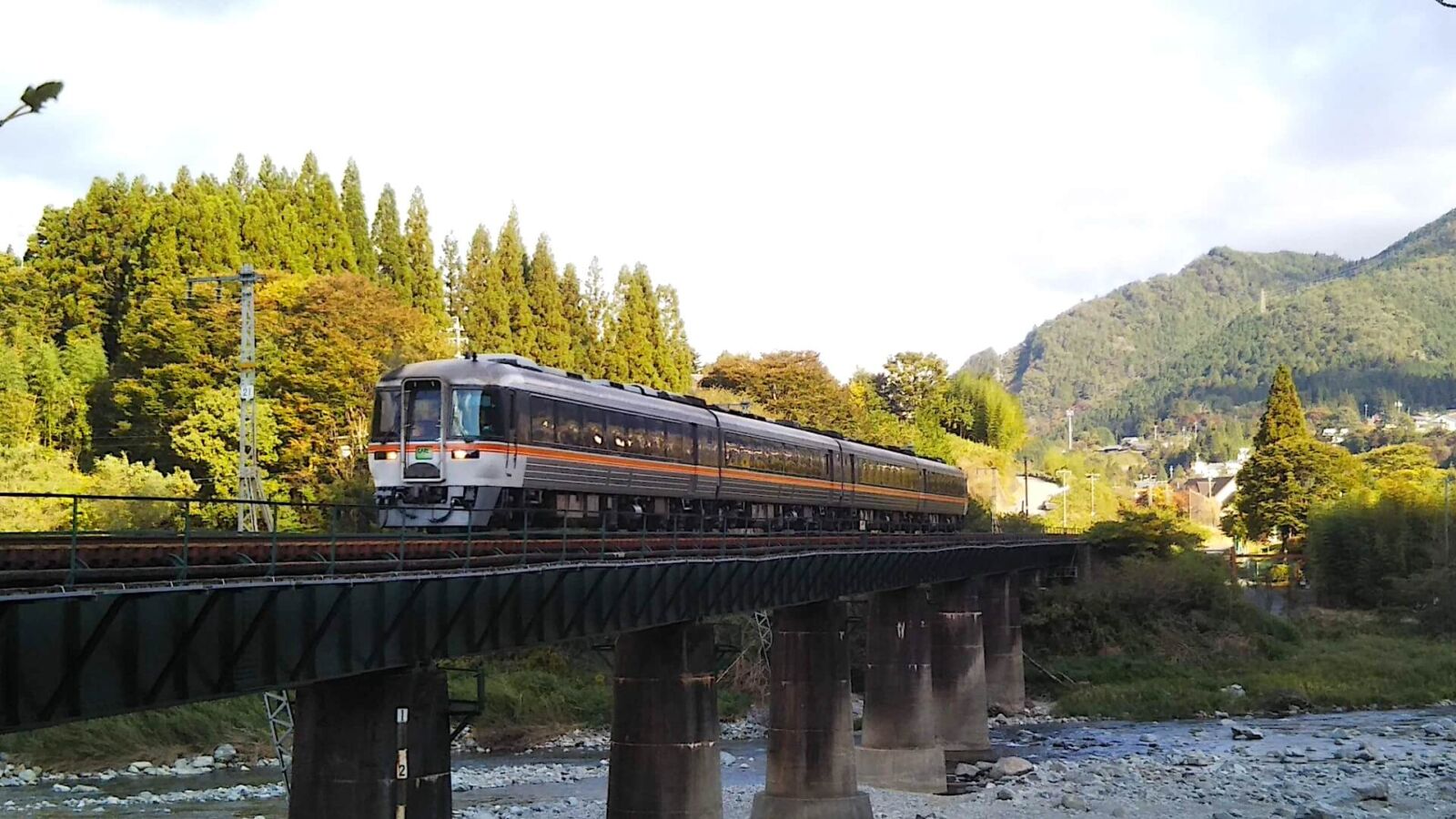
Lying deep in Central Japan, Takayama takes time to reach but given the efficiency of the Japanese transport network, that journey is usually simple. The Limited Express Hida service runs from Central Japan’s largest city of Nagoya, to Takayama and onto Toyama in the north. Bus services also connect Takayama to Toyama and Kanazawa to the north and the popular alpine valley of Kamokochi and onto Matsumoto to the west. For information on how to reach the city, see our ‘How to Get to Takayama’ page.
Want to see the old-town of Takayama for yourself?
Based in Central Japan and operating all-year-round, we offer a two highly entertaining tours, including our popular group-tour of Takayama and Shirakawa-go and our immersive Takayama History and Culture tour. Both of these tours are sure to educate and please. All tours are led by locally-based guides and combine a visit to several places-of-interest in Takayama or with a walk around the quintessentially Japanese town of Shirakawa-go. Our tours are fun, interactive and family-friendly. For more information, or to book a tour, click on the banner or button below.
1 Day Tour
| 1-Day Tour from Takayama: Explore Scenic Old Japan in Takayama and Shirakawa-go | |
|
| |
| Period | All Year Round |
| Time | 09:00 – 18:30 |
| Meeting Place | Takayama Station |
| Adult Rate | ¥20,800 / 22,800 |
| Child Rate | ¥12,000 / 14,000 |

1 Day Tour
| 1-Day Tour in Takayama: Immerse in Takayama’s Rich History and Temples | |
|
| |
| Period | All Year Round |
| Time | 09:00 – 16:00 |
| Meeting Place | Takayama Station |
| Adult Rate | ¥18,800 |
| Child Rate | ¥11,500 |

Of course, we also offer private tours and transport in and around the Takayama area, and other regional destinations. Our drivers and vehicles are fully certified, allowing us to transport you to and from your preferred destinations in combination with any activity that suits your schedule. All vehicles are well-maintained and in good condition, allowing you to relax and enjoy your ride to wherever you are going.
We can arrange both private tours with an English-speaking guide or a private charter, including a private vehicle and driver but without a guide. We’d love to be part of your adventure in Central Japan and help you discover even more!
Private Tour
| [START FROM TAKAYAMA] Private Takayama & Shirakawa-go Tour | |
|
| |
| Period | All Year Round |
| Time | 09:00 – Takayama Area |
| Meeting Place | Takayama Station Area |
| Price | ¥211,200 ~ / group |

Got a question about visiting Takayama or Shirakawa-go? Click the ‘INQUIRY’ button below or contact us and let’s get planning together!
Why choose us?
Awarded a 2022 TripAdvisor Travelers’ Choice Award for our 1-Day Snow Monkeys, Zenko-ji Temple & Sake Tour – recognised as one of the Top 10 Experiences in Japan – we have the local knowledge and experience to help you get the most out of your time in Nagano and Central Japan.
Got a question about visiting Takayama and Central Japan? Contact us and let’s get planning together!



